Archive for the ‘Threats from Bushfire’ Category
Tuesday, March 13th, 2012
This article by the Editor was first published as a letter entitled ‘Premises at Risk’ in the Blue Mountains Gazette 20051116.
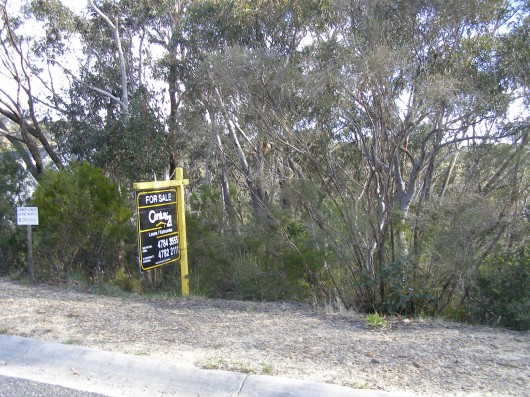 Flogging the bush for housing, undefendable in the event of a bushfire
Stuarts Road, Katoomba – a house has since been approved by Council and subsequently built on this site, killing the wildlife habitat in the process. Flogging the bush for housing, undefendable in the event of a bushfire
Stuarts Road, Katoomba – a house has since been approved by Council and subsequently built on this site, killing the wildlife habitat in the process.
(Photo by Editor 20070922, free in public domain, click photo to enlarge)
.
Part and parcel of choosing to live in the Blue Mountains is that, by being on ridgelines surrounded by Eucalypt forests, many properties are inherently exposed to bushfire threat. Whether bushfires be caused by lightning (rarely), accidentally by people, RFS-prescribed, or by arson (usually); bushfire risk management is a community responsibility – not just the lot of Rural Fire Service volunteers.
The arson threat aside,
“residents, land owners and land managers of the Blue Mountains need to accept that they are in a bushfire prone area and their properties may be subject to ember attack when threatened by bushfire.”
[Blue Mountains Conservation Society Bushfire Policy].
.
To dispel a rural myth, not all native habitats recover from bushfire. Certain species exist only in ecosystems that are never burnt. Post-bushfire regrowth often sporns dominant species like Eucalypt and Acacia, whereas original biodiversity may take centuries to recover. Bushfire is often a precursor to infestations of grass and weeds, and if followed by intense
rain, also a catalyst for eroding irreplaceable native soils.
The antique premise ‘hazard reduction’ has become spin for pre-emptive burning that is prone to escaping out of control and so itself a hazard.
Slashing and bulldozing under the premise of ‘Asset Protection Zone’ is also proving ineffective against ember attack and wildfire. But like arson, the Hazard Reduction and APZ theories contribute to the net loss of important habitat.
Proven effective and sustainable is early detection & response to spot fires.
Most artificial fires start on developed land, so this is where control measures should be focused – maintenance of gardens and guttering, retrofitting houses with materials and defences to resist fire, planting fire-retardant hedging around houses and implementing countermeasures recommended by Australian Standard 3959.
The future of sustainable bushfire risk management starts by preventing houses being built where they cannot be safely protected from bushfires.
Effective ‘hazard reduction’ is investigating and catching the arsonists.
Friday, March 2nd, 2012
The following article is a reproduction of that by James Woodford of RealDirt.com.au dated 20080908 and entitled ‘Hazard Reduction Burning: ecological or pathological?‘
It was initially published in the Sydney Morning Herald (SMH) newspaper at the time,^http://www.realdirt.com.au/2008/09/08/hazard-reduction-burning-ecological-or-pathological-smhreal-dirt-exclusive/].
.
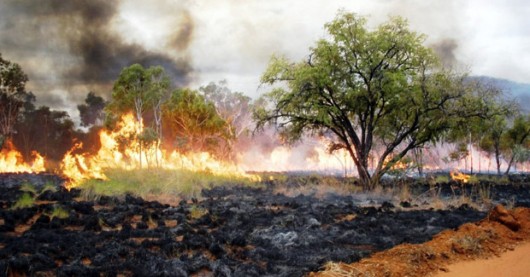 Broadscale State-sanctioned arson to West Australia’s wild Kimberley Broadscale State-sanctioned arson to West Australia’s wild Kimberley
.
Habitat Editor’s preliminary comment:
.
What is revealing about the following article is more the defensive comments contributed by members of bushfire management (in red) – reflecting the entrenched beliefs and practices of their ‘bushphobic cult‘ is being challenged and so they unleash sanctimonious vitriol to anyone who dares criticise.
The euphemism ‘Hazard Reduction‘ has become a bushfire management cult.
It has evolved as a consequence of generations of fire fighters denied proper and appropriate reasources by successive Liberal-Labor governments to fight bushfires when they occur. Fighting bushfires requires instantaneous detection technology and standby effective suppression technology. Instead Australian governments at all levels deliver urban firetrucks and hollow promises. The rest is left to fit and willing resident volunteers. It is politicians again sending ouir sons to fight their war.
Since government pollies have always denied bush fire fighting the ability to effectively detect and respond to ignitions, bushfire management’s response strategy has descended into the defeatist arsonist ‘burn the bush before it burns‘. Australian bushfire fighting has become an arson disgrace.
Such defeatism ignores the fact that native vegetation is the innocent victim of fire. Instead the cult belief demonising Australia’s natural ecological asset as ‘fuel’, a ‘hazard’, a liability. It is a similar simplistic attitude that early colonists had toward wildlife, considering them as ‘vermin’ and ‘game’. Hazard Reduction has been euphemistically rebranded ‘prescribed burning’ by the so-called ‘fire ecologists’. It remains arson no less.
The scale and frequency of hazard reduction has exponentially increased so that what was once a buffer of cleared land around specific houses is now broadscale incineration including remote aerial incendaries setting fire to vast regions of forest and bushland many kilometres from houses. The so-called ‘cool burns’ often reach into the tree canopies and cause the same irreparable tree damage as intense wildfires. Many hazard reductions escape and get out of control – such as the 2011 Perth Hills experience that destroyed 68 houses.
Then when a wildfire does occur, standard bushfire management practrice invariably leaves to burn until/unless houses are directly threatened. Remote wildfire has become default hazard reduction. And so, every year thousands of hectares of native vegetation understorey is destroyed and the dependent fauna are driven closer to exinction. Hazard Reduction is Australia’s worst ecological crime.
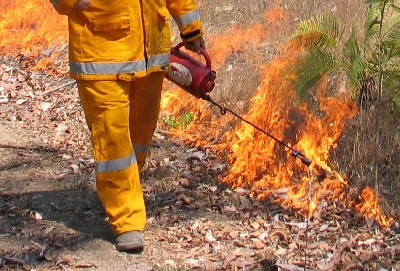
The quoted article:
.
Start of Article:…’It’s spring, and soon we’ll start to get sensationalist stories predicting a horrendous bushfire season ahead. They will carry attacks on agencies for not doing enough to reduce fuel loads in forests close to homes, for unless those living on the urban fringe see their skies filled with smoke in winter they panic about losing their homes in January.
Fighting fires with fear is a depressing annual event and easy sport on slow news days. Usually the debate fails to ask two crucial questions: does hazard reduction really do anything to save homes, and what’s the cost to native plants and animals caught in burn-offs?
A new scientific paper published in the CSIRO journal Wildlife Research by Michael Clarke, an associate professor in the department of zoology at La Trobe University, suggests the answer to both questions is: we do not know.
What we do know is a lot of precious wild places are set on fire, in large part to keep happy those householders whose kitchen windows look out on gum trees. Clarke says it is reasonable for land management agencies to try to limit the negative effects of large fires, but we need to be confident our fire prevention methods work. And just as importantly, we need to be sure
they do not lead to irreversible damage to native wildlife and habitat. He argues we need to show some humility, and writes: “The capacity of management agencies to control widespread wildfires ignited by multiple lightning strikes in drought conditions on days of extreme fire danger is going to be similar to their capacity to control cyclones.” In other words, sometimes we can do zip.
Much hazard reduction is performed to create a false sense of security rather than to reduce fire risks, and the effect on wildlife is virtually unknown.
The sooner we acknowledge this the sooner we can get on with the job of working out whether there is anything we can do to manage fires better. We need to know whether hazard reduction can be done without sending our wildlife down a path of firestick extinctions.
An annual burn conducted each year on Montague Island, near Narooma on the NSW far South Coast, highlights the absurdity of the current public policy free-for-all, much of which is extraordinarily primitive. In 2001 park rangers burnt a patch of the devastating weed kikuyu on the island. The following night a southerly blew up, the fire reignited and a few penguins were incinerated. It was a stuff-up that caused a media outcry: because cute penguins were burnt, the National Parks and Wildlife Service was also charcoaled. Every year since there has been a deliberate burn on Montague, part of a program to return the island to native vegetation. Each one has been a circus – with teams of staff, vets, the RSPCA, ambulances, boats and helicopters – all because no one wants any more dead penguins.
Meanwhile every year on the mainland, park rangers and state forests staff fly in helicopters tossing out incendiary devices over wilderness forests, the way the UN tosses out food packages. Thousands of hectares are burnt, perhaps unnecessarily, too often, and worse, thousands of animals that are not penguins (so do not matter) are roasted. All to make people feel safe.
Does the burning protect nearby towns? On even a moderately bad day, probably not. Does it make people feel better? Yes.
Clarke’s paper calls for the massive burn-offs to be scrutinised much more closely. “In this age of global warming, governments and the public need to be engaged in a more sophisticated discussion about the complexities of coping with fire in Australian landscapes,” he writes. He wants ecological data about burns collected as routinely as rainfall data is gathered by the agricultural industry. Without it, hazard reduction burning is flying scientifically blind and poses a dangerous threat to wildlife. “To attempt to operate without proper data on the effect of bushfires should be as unthinkable as a farmer planting a crop without reference to the rain gauge,” he writes.
In the coming decades, native plants and animals will face enough problems – most significantly from human-induced climate chaos – without having to dodge armies of public servants armed with lighters. Guesswork and winter smoke are not enough to protect our towns and assets now, and the risk of bushfires increases with the rise in carbon dioxide.’
..end of article.
.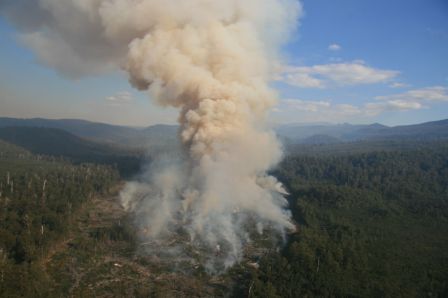
Article comments:
.
Ian MacDougall (20080909):
“The theme of this piece is the saving of wildlife that might be destroyed by hazard reduction burning. But the trouble is that Australian plant species divide into two broad groups: the pyrophytes or ‘fire plants’ and the pyrophobes, or ‘fire loathing plants’. There can be little argument about it: much of the Australian bush has incorporated fire into its life cycle, with eucalypts, acacias and many undergrowth plants loaded with volatile oils. All that is needed to convert them into incendiary bombs is a hot summer’s day. Even the old ‘banksia man’ with his beard of dried flower parts surrounding the seeds ready to go is designed by nature to catch fire, though his tree is not.
I regularly drive through the Warrumbungle Park. There is nothing so pathetic as the signs they have up everywhere warning people that gathering firewood is forbidden. Nor do they control burn there. So every few years the whole park goes up like a bomb and damn near everything gets burnt to smithereens.
This continent was ‘firestick farmed’ by the Aborigines, arguably back to 110,000 years ago. The animals and plant species survived their cool burns.
We need to adopt that practice, which was lost when the country was fenced and farmed, and preventing bush fires became the name of the (futile) game.
I recommend ‘Australian Rainforests: Islands of Green in a Land of Fire’, by DMJS Bowman for those looking for further information.”
.
Adam 20090909:
“James, read your piece in the Herald. I live on the edge of the bush in the Blue Mountains, and I disagree with you.
Having seen fire, there’s no doubt in my mind that backburning makes a difference, but the worse the fire is, the harder to contain it. To extend the analogy you quote….we can’t control cyclones but its still worth owning an umbrella for lesser storms. If you believe that no animals or trees should die in the name of housing insurance, I think that is a different question.”
.
john p (20080909):
“Great article – now brace for the inevitable backlash from the pro fire lobby.”
.
Jeremy (20080910):
“As an enthusiastic CFU (Community Fire Unit) member in Sydney, I read your SMH article with interest – but then recalled my recent visit to the Garma Festival in NE Arnhemland.
There much was made of the controlled burns being increasingly managed by indigenous rangers on the basis of their traditions, but also increasingly funded as carbon offsets by international polluters like Conoco because the controlled burns were so much less polluting than uncontrolled ones – which would in time occur anyway.
How does that fit in with your thesis?”
.
Robert Morse 20080911:
“Talk about a sensationalist story. Yes there probably is no scientific data, but there is anecdotal evidence. Hazard reduction is only part of a holistic approach to protecting the community. They can reduce the intensity of a bushfire and allow the firefighters or residents to defend their homes.
This is also true for the environment, some plants can withstand a low intensity fire but would be destroyed in a high intensity wildfire. As for the wildlife, you just have to stand at the edge of a hazard reduction to see the multitude of creatures fleeing the burn. Do they all get out? I don’t know, but I’ve seen more dead and injured animals after a bushfire than a hazard reduction.
One thing most people don’t take into account is that the bush has evolved to burn at a particular time of year, usually when it’s hot and dry. But, of course, hazard reduction burning are done in the cooler months. It is reason to think that this must effect the plants and alter their community, but so does any fire or even lack of fire. After decades of natural fires and hazard reductions (mosty done with little regard to the environment, unlike what is done now), I still can look out on thousands of hectares of World Heritage bushland full of animals.
Do land managers and fire agencies always get the hazard reductions right? No, but it is used as a learning experience to be able to do it better next time.”
.
Henk Hagedoorn (20080914):
“More and more scientific evidence is surfacing showing that fire is not good for the environment as a whole including vegetation and in particular the soil biota. Even a so called cool burn devastates the top 25mm of all life slowing the future uptake of carbon into the soil.
Just look at the release of CO2 by reduction burning (any burning) and the subsequent inability of the burned area to capture CO2 for the next 10 years or so. We know far too little to make a statement that “burning is ok” while science could ultimately show that it is NOT.
Most of our decisions to burn or not to burn are based on hearsay and anecdotal evidence. Just not good enough. A very good article. there must be more of these to get people thinking.”
.
Ross Constable (20080915):
“Good article James, interesting how you skillfully worked the Penguins into it.
The two questions the article was based on are only part of the this very complex issue. Others might be: Where do we get the biggest fire mitigation (protection) bang for the taxpayers buck? Do we need to focus mitigation more towards the “points of risk” (lives & assets), or towards the hazard (fuels).
The problem here is the politically perceived, remote fuel hazards being burned repeatedly at the expense of our biodiversity and water catchments, while the points of risk and their surrounds remain the primary part of the hazard.
How effective are low intensity, autumn, hazard reduction (HR) burns?
Here is my rock sold, gold guarantee regarding the effectiveness of a dry eucalypt forest fuel based HR burn:
A HR will completely protect an asset if:
- The wildfire that threatens the asset via the HR occurs across flat ground, under exactly the same environmental conditions as the HR burn.
- The HR is unbroken (no ground fuel gaps)
- The wildfire occurs within 14 days of the HR.
This is a bold guarantee… or is it? Think about it.”
.
S. Ridd (20080915):
“Dear James, I regularly skim the Opinion & Letters sections of the Herald because I value reader input. It was refreshing to read your article on hazard reduction, and encouraging because I support your stated views; the sensationalist predictions of bushfire Armageddon, the bush morphed into threatening fuel loads, and questioning the post-War II practice of hazard reduction.
Thank you for investigating and publicising research on this issue. So often the research is not made public and little reference is made to research by those hell bent on perpetuating the bushphobic culture of hazard reduction.
The key problem is no one is measuring the environmental impact of hazard reduction, certainly not in the Blue Mountains where I live. As you state: “the effect on wildlife is virtually unknown”. Another key problem is the lack of investment in resources to detect and respond to ignitions promptly.
Another problem, more cultural defence, is the kneejerk reaction by those who fail to suppressed bushfires quickly, to say see we told you so, so give us millions to hazard reduce more of what bush we’ve got left and there will be no bush to burn – so problem solved! This is a scorched earth simplistic approach, that as you contend creates “a false sense of security rather than to reduce fire risks.”
You refer to Montague Island. The Grose Valley Fires of 2006 was a defector hazard reduction of 14070 hectares of important conservation bushland including so-called protected World Heritage.
Ian MacDougall’s response [9 Sep 08] would have merit if we had similar large tracts of quality habitat across NSW that existed pre 1788, not the 25% of forested NSW that we now have. The Aboriginal firestick justification is reserved for a pre-1788 dreamtime.
Adam’s input [9 Sep 08] contends “backburning makes a difference” but his argument is to destroy the natural asset we should be protecting. The argument is flawed because it admits current bushfire fighting methods are so bad that we cannot adequately detect and suppress bushfires in 2008.”
.
Christine 20080916:
“Your article on Fire was read with great interest. We have lived in the ‘bush’ for 20 years, are active members of a wildlife care group and my husband is an active member of the local bush fire brigade. We have seen so-called ‘controlled’ burns get out of control (causing the tragic death of a local in one instance), and have often wondered if these burns are really doing any good at all, for either the bush or the wildlife. Thanks for bringing this subject to the forefront and stimulating debate. It will be interesting to see the results of further research, especially by Prof. Michael Clarke.
An interesting book to read on how Australia’s landscape has been drastically altered, not just by white settlement, but by earlier Aboriginal settlers burning off, is “Back from the Brink” by Peter Andrews.”
.
Ross Constable (20080916):
“S. Ridd, your point regarding our fire authorities ability (or lack of it) to quickly detect and respond to fire, especially remote area fires is the key to fire suppression in this country. The recent Bushfire CRC Project A3.1 aerial suppression research, Pollack H. N. 2003, looks at this very issue. In summary, the research has found that the rapid deployment of aircraft and ground crews to a fire will have a high probability of suppression success even when high fuel loads and fire danger indexes exist. The cost of this type of approach is not big, especially when one considers the enormous costs associated with suppression of large fires, not to mention the life and property costs.
For further info on this research see: http://www.bushfirecrc.com.au’
.
Greg (20080919):
Indigenous burning practices have been around in a range of global climate scenarios over south-east NSW for at least 6,000 years up until European intervention about 200 years ago. These Indigenous burning practices put frequent small burns into areas that were inhabited, and allowed large ‘natural’ fires on an average of every 20 years into uninhabited areas. The small frequently burned areas contained the runs of large ‘natural’ fires.
Biodiversity 200 years ago was much higher than it is today. In a global warming world I think we can learn a lot from the Indigenous burning practices to apply in contemporary fire management.
.
Mick (20090919):
“James, You may have bitten off more than you can chew with this story!
Fire management in Australia is a very complex issue and aside from the common view that fire is a natural part of the Australian environment we are managing it in a unatural world. We have built our homes next to our fire prone ecosystems and should a fire start by lightning – the fire is suppressed – in itself an unatural act.
I agree that more information is better than less when we’re managing the impacts of prescribed fire on the environment – for respondants to suggest however that low intensity fire has a greater impact on the environment than high intensity fire is a generalisation and does not consider frequency, ‘patchiness’ and vegetation community or forest type.
Further assertions by respondants that we should increasingly rely on emergency response and suppression of wildfires rather than also using land management approaches is niave and does not recognise the full range of fire management tools available for managing risk (such as established road networks, rapid response resources, suitable infrastructure for detection, prescribed burning, manual hazard reduction, development and planning controls etc) and balancing ecological outcomes with those for protecting life and property.
Lets get the real dirt on this issue and tone down the tears!”
.
Phil (20081025):
“I note that neither Michael Clarke’s original paper or your article say that prescribed burning doesn’t stop bushfires; all they say is that we don’t know how well it works. As a fire manager & researcher I couldn’t agree more.
Its not enough to say that it worked a couple of times in Jarrah forest or American Ponderosa Pine, we need to know how often and under what conditions it will work in Sydney heathland, Cumberland Woodland or montane Candlebark/Ribbon Gum forest. As you say, we need to know the effects of this artificially frequent fire regime on wildlife, but we don’t. We are also in no position to make the sweeping claim that “the Aborigines did it”, as if all of the indigenous nations used fire in the same way in all environments and communities from the desert to the alpine area. The traditions and evidence say that they didn’t and don’t.
The reality is that for such an influential force that we wield, we know far too little to say whether we are helping things or making them worse.
Good on you for putting the heat on! Keep it up, we need the pressure on us to get some real answers.”
.
John Blunden (20081123):
“Thanks for you article. I agree the problem facing the forest burners is more mental than physical. they are sick puppies. to use the indigenous people and how they treated the environment seems a total insult. one thing I know for sure about the indigenous people is that they didn’t bomb it from helicopters with hi intensity incendaries. what have we adopted from these people except a few place names, nothing, not their lore their dance their hunting and gathering, housing, their connection to mother earth. i have read reports about the koori people and what we call burning off. they certainly don’t describe a gang of double bogan rednecks going rat with diesel. nothing enjoys being burnt. especially something as sensitive as the forest and all it contains. i sometimes get a kick out of the lies, things like cool burn controlled burn hazard reduction blah blar. mostly i think there scared little men waging genocide on plants and animals, who grope around for reasons to justify their sick behavior.”
.
Blue Mts Firefighter (20100815):
“There are some unbelievably ignorant or just plain naive posters on here. You obviously have no idea how difficult it is for us to get a hazard reduction burn approved because of the need to plan in cooperation with National Parks and Wildlife, the local council, and others, mostly to protect the environment. We don’t have a problem with protecting the environment, except that the bureaucratic process takes far, far too long.
In one of our most vulnerable areas in the Blue Mountains (Weemala) the process took 6 six years. It was a hazard reduction in an area where the fire typically jumps the Great Western Highway and the lower Blue Mountains then turns to sh*t.
Do you really believe we don’t care about the flora and fauna? You are fools if you do. Of course we care. We also care about people and their homes.
And believe it or not if your hopelessly unprepared house, roof and walls overgrown with natives, gutters full of leaves, garden full of long dry grass (yes they do exist – all over the place) happens to catch fire, we will do our damndest to save it even if you are an idiot.“
.
Simon (20101023):
“I have been involved in the bushfire services for 13 years and can say that when hazard reduction burning is done correctly and in a strategic manner it makes a major difference during summer. I have been involved with many large scale fires where the only way they have been controlled is because they have burnt into low fuel areas.
Western Australia through DEC has always been heavily involved in bushfire mitigation efforts and it shows in the reduced frequency of large scale bushfires.
Argue all you want about terrain etc but the reality it is the strategic large scale burns that DEC conduct protects WA from similar large scale bushfires that you see on the East Coast.
We have to remove ourselves from the European thinking that fire is bad and realise that since Australia started drying out 100,000′s of years ago we have had fires, the difference is we have stopped them for the past 100 years, now we have excessive fuel loads that damage the eco system when they burn due to the high intensity fires they produce.”
.
Macca (20120102):
“What a great article back in 2008, i notice that most people relate their experience to NSW or Victoria, i moved from wollongong to Mackay in queensland and if you want to see the results of HR burning completed over 100 years come to central queensland and check out the dust bowl that is now queensland , creeks full of mud , and only surviving animal .. kangaroos ..well done queensland .. im moving to New Zealand … bye”
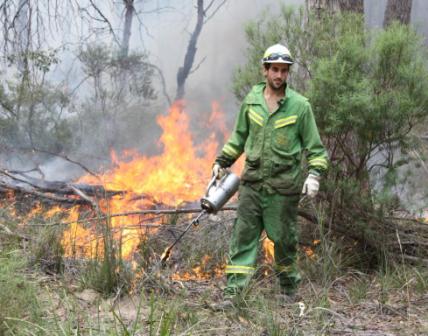 Defeatist Policy: ‘Burn it before it burns, bugger the wildlife’! Defeatist Policy: ‘Burn it before it burns, bugger the wildlife’!
.
Tuesday, February 28th, 2012
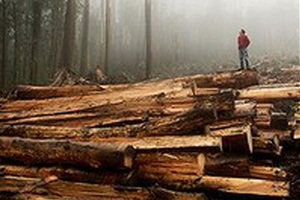  Click above icon to play Pink Floyd’s ‘Wish You Were Here’
..first turn speakers on, then while playing scroll slowly through this article… Click above icon to play Pink Floyd’s ‘Wish You Were Here’
..first turn speakers on, then while playing scroll slowly through this article…
.
..So, so you think you can tell
Heaven from Hell?
Blue skies from pain?
.
Can you tell a green field
From a cold steel rail?
A smile from a veil?
Do you think you can tell?
.
Did they get you to trade
Your heroes for ghosts?
Hot ashes for trees?
Hot air for a cool breeze?
.
Cold comfortable change?
Did you exchange
A walk on part in the war
For a lead role in a cage? …
.
(Lyrics extract from Pink Floyd’s legendary song ‘Wish You Were Here‘ off their 1975 album of the same name)
.
These photos, as you scroll through them, are of Tasmania’s wild old growth forest heritage, which is currently being destroyed in 2012, driven by the Premier Lara Giddings Labor Government of Tasmania.
.
.
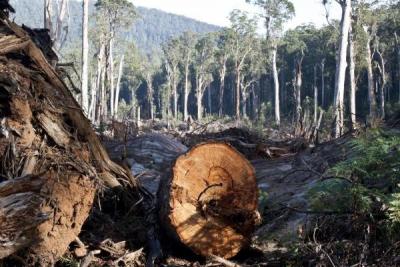 . .
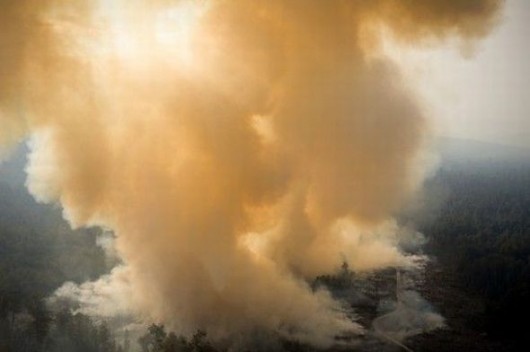 . .
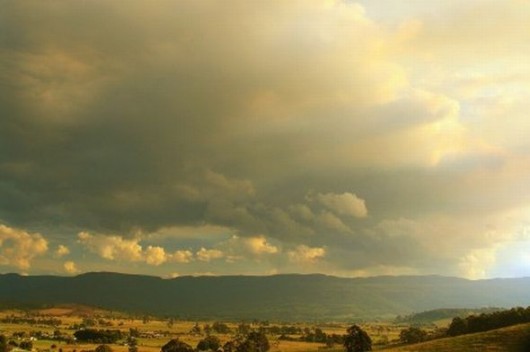 . .
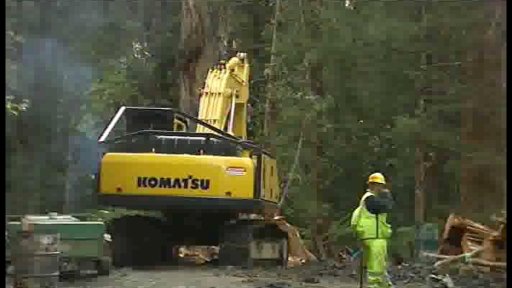 . .
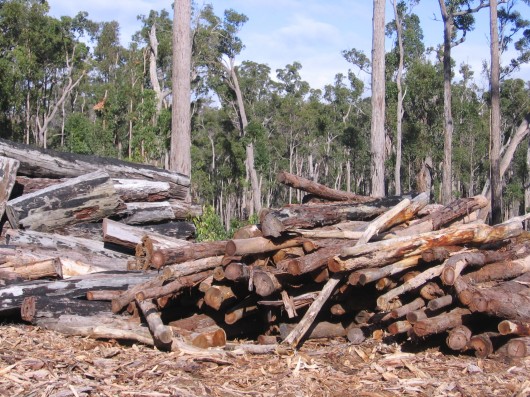 . .
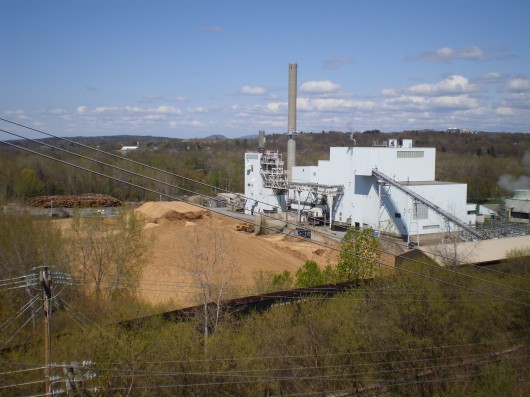 . .
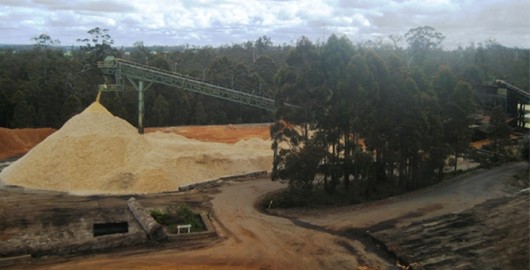 . .
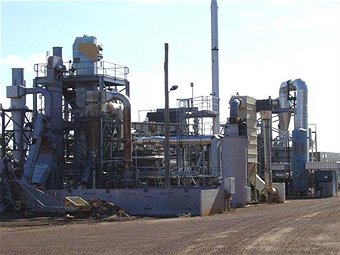 . .
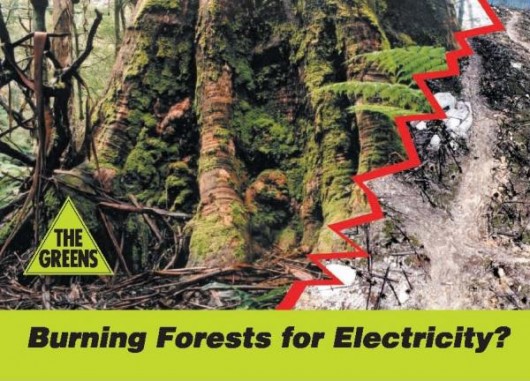 . .
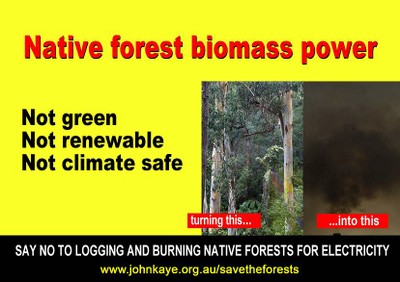 . .
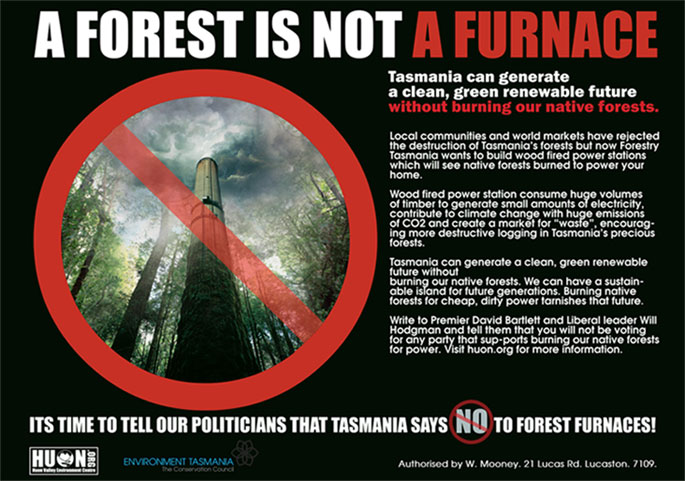 . .
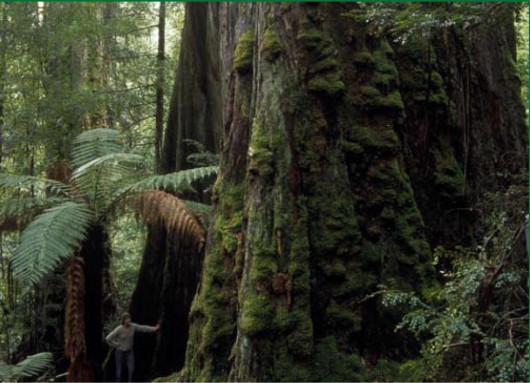 . .
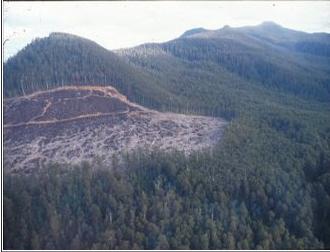 . .
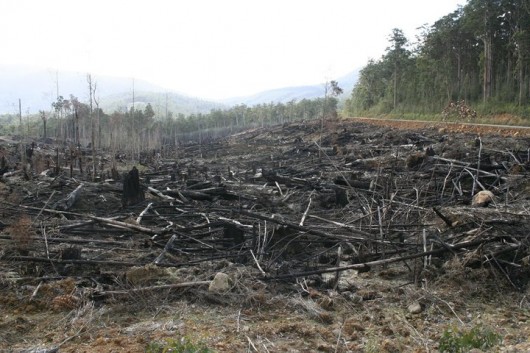 . .
 Australia’s Prime Minister Julia Gillard,
who on 7th August 2011 personally promised the protection of Tasmania’s old growth forests. Australia’s Prime Minister Julia Gillard,
who on 7th August 2011 personally promised the protection of Tasmania’s old growth forests.
.
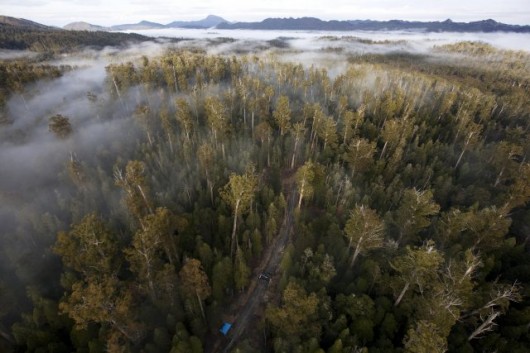 . .
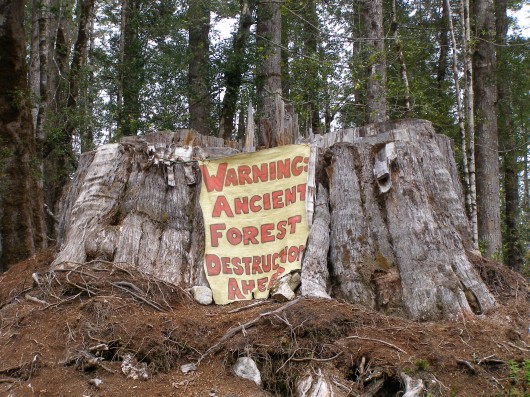 . .
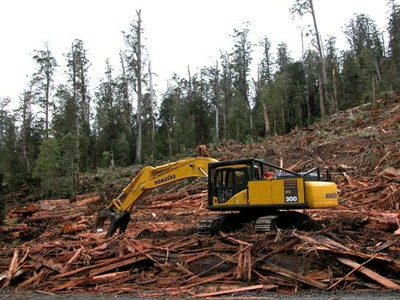 . .
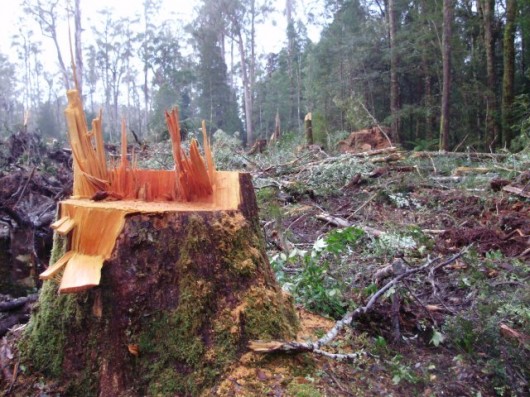 . .
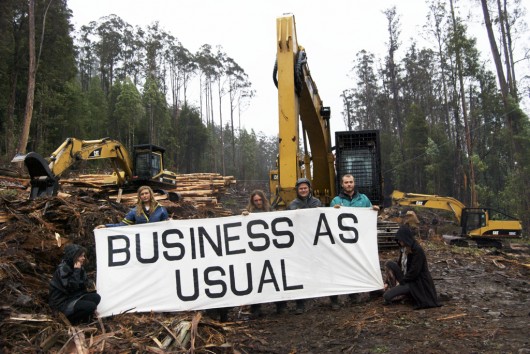 Click photo to enlarge Click photo to enlarge
.
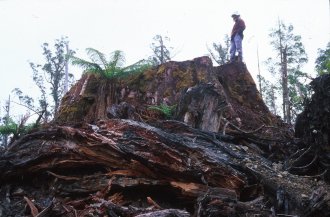 . .
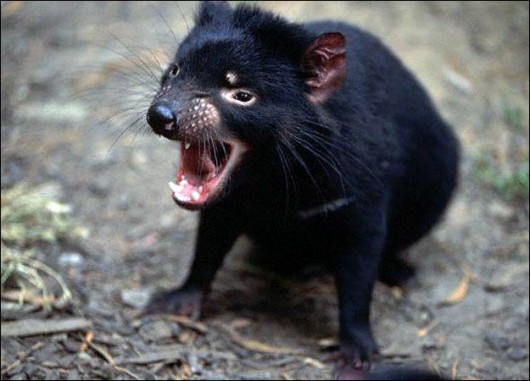
Tasmania’s disappearing wildlife wish Julia was here
.
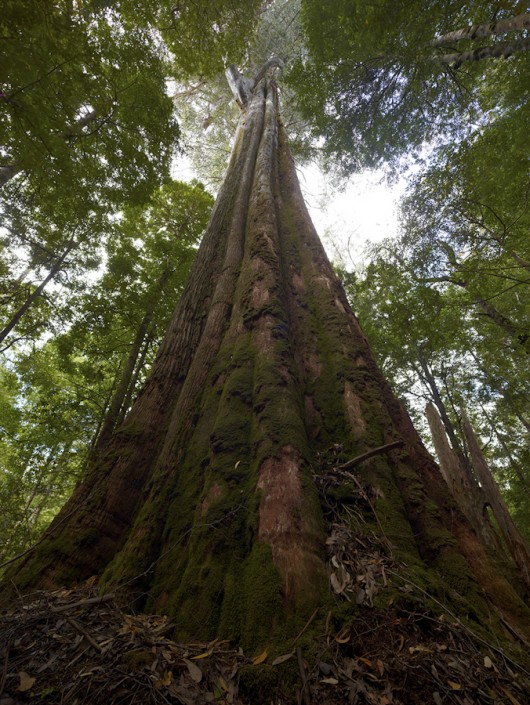 . .
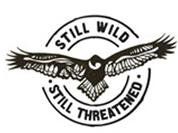 . .
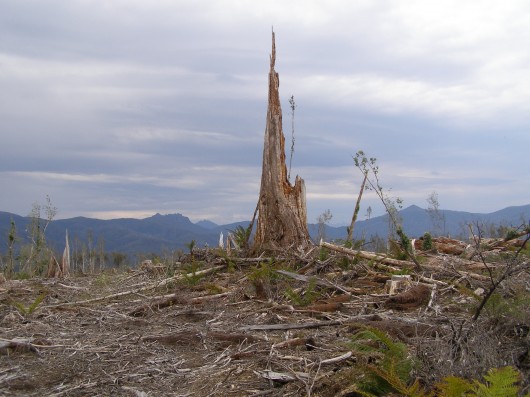 [Photo by Editor Sept 2011] [Photo by Editor Sept 2011]
Click photo to enlarge
.
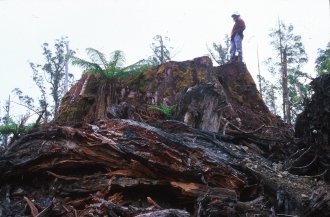 . .
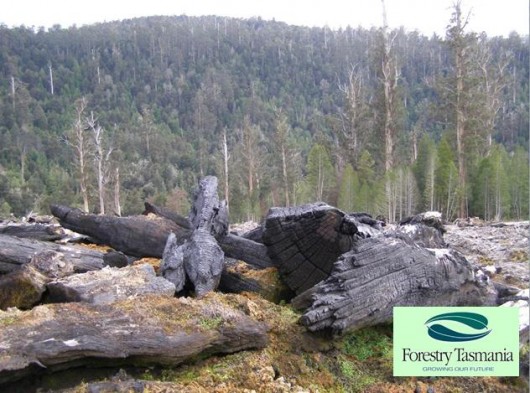 .. ..
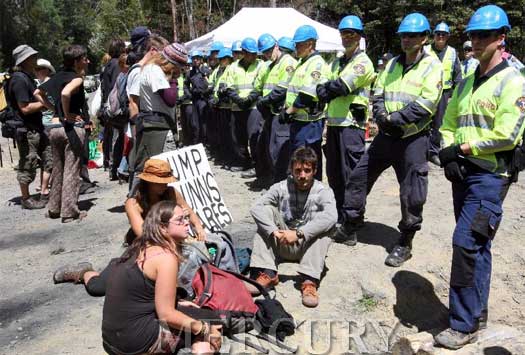 .. ..
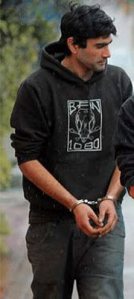
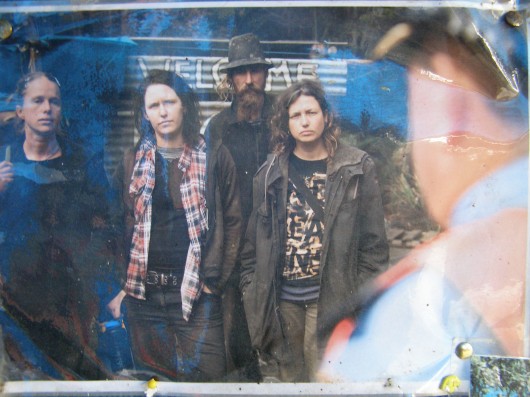 . .
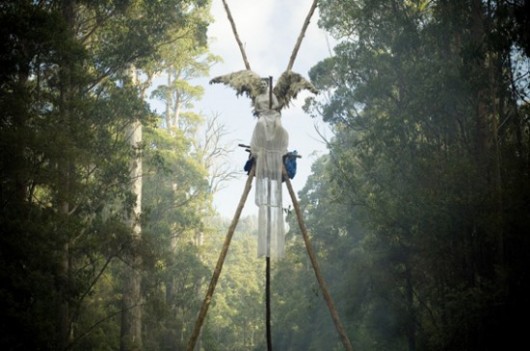 . .
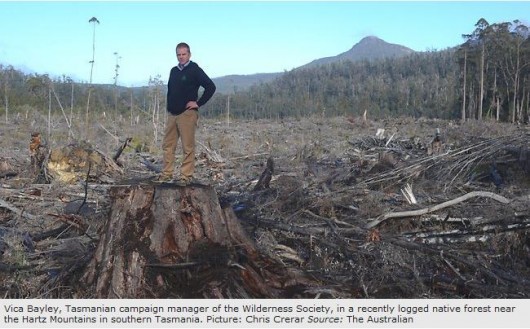 . .
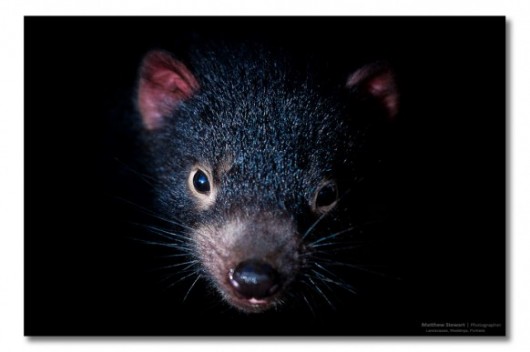 . .
 . .
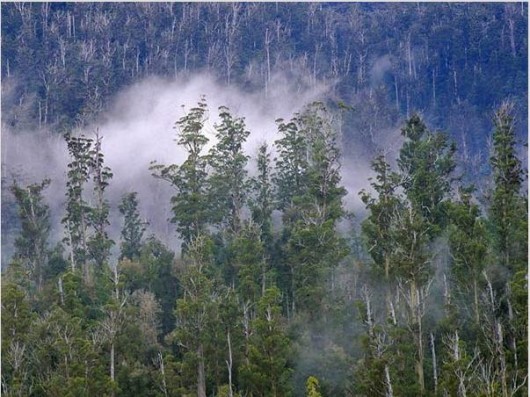 . .
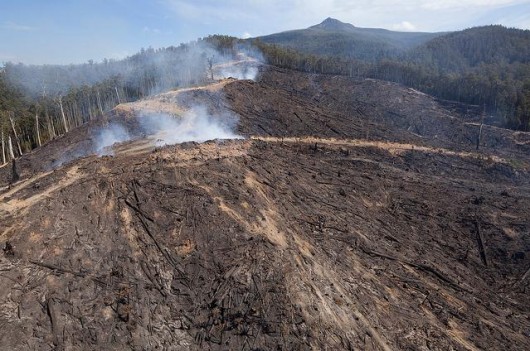 . .
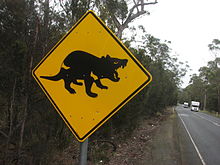 . .
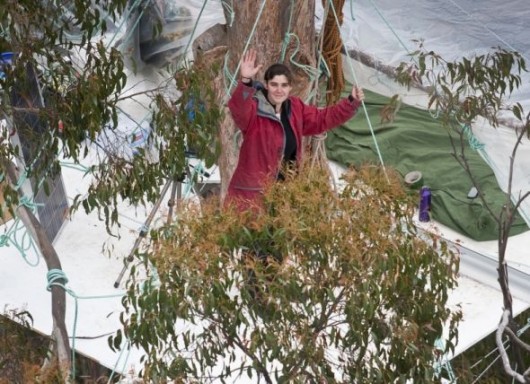 Follow the Tree Sit Protest defending Tasmania’s native forests
^http://observertree.org/ Follow the Tree Sit Protest defending Tasmania’s native forests
^http://observertree.org/
.
.
Saturday, February 18th, 2012
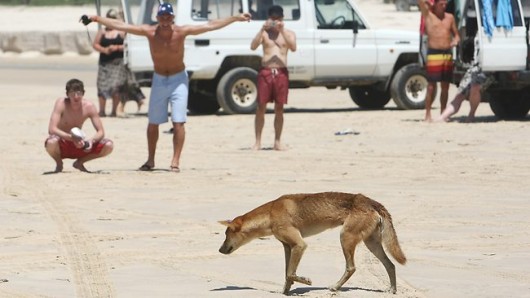 No place for feral tourists on World Heritage Fraser Island No place for feral tourists on World Heritage Fraser Island
.
Remove all ferals from Fraser Island – rabbits, cats, brumbies, gambusia, cane toads, 4WDs, tourists and tour operators!
It’s time to reverse the tables. I’d like to see these exploiters racing towards catastrophic collapse instead of the native dingos – and for any trangressions automatically attract a minimum $200,000 fine and/or 6 months in gaol.
Shut down the Fraser Island Ferry Service and Manta Ray Fraser Island Barge service – pay the ferrymen compensation to retire happily.
Shut down Kingfisher Bay Resort – pay the operator out to retire happily, then convert it into a proper National Parks wildlife research station.
 Such 20th Century resort tourism is inappropriate for World Heritage Fraser Island Such 20th Century resort tourism is inappropriate for World Heritage Fraser Island
.
Fraser Island is a National Park. It is world heritage listed by crikes, not as a tourism promotion, but for its ecological values. The place is endangered, the pure native dingo is on its last legs and suffering at the hands of humans, so number one priority of a national park is ecological protection. National Parks Service needs to get its nose out of tourism exploitation and bush arson and back into its job of wildlife ecology management. But it needs to be managed at national level, because the Queensland DERM cowboys can’t be trusted.
There is no reason why the custody of the entire island should not be returned to the traditional Butchulla and Badtjala peoples to oversee the rehabilitatiin and ecological management.
Indeed, Fraser Island should renamed back to the respective indigenous names: K’gari and Gari.
It is time to get serious about ecology. Simple solution, just takes community will and leadership, like in the 1970s grassroots campaign to originally protect the island from Joh’s sand mining pillage.
Get the tourists off Fraser Island. Shut down Base Camp Fraser Island, shut down Eurong Beach Resort, shut down Fraser Island Beach Houses, Fraser Island Fishing Units, Fraser Island Hideaway, Fraser View Apartments, Cathedrals on Fraser camping ground, Fraser Island Waiuta Retreat. Compulsorily acquire their land holdings and put them on the last tourist ferry off the island.
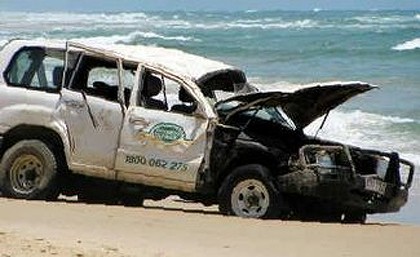 4WD tourist hoons on Fraser Island in 2009
[Source: ‘Overseas tourists drive up Fraser Island 4WD carnage’,
by Tony Moore and Cameron Atfield, Brisbane Times, 20091215,
^http://www.brisbanetimes.com.au/travel/travel-news/overseas-tourists-drive-up-fraser-island-4wd-carnage-20091214-ks6f.html] 4WD tourist hoons on Fraser Island in 2009
[Source: ‘Overseas tourists drive up Fraser Island 4WD carnage’,
by Tony Moore and Cameron Atfield, Brisbane Times, 20091215,
^http://www.brisbanetimes.com.au/travel/travel-news/overseas-tourists-drive-up-fraser-island-4wd-carnage-20091214-ks6f.html]
.
.  Pure Dingo
Threatened, harrassed on its native Fraser Island Pure Dingo
Threatened, harrassed on its native Fraser Island
.
Last April 2011, three Fraser Island dingo pups were destroyed (read ‘executed‘) in as many weeks after displaying aggressive behaviour towards humans, according to the Department of Environment and Resource Management (DERM). DERM general manager Terry Harper said three dingoes from the June/July 2010 litters had “posed a clear threat”’ to the safety of visitors and the community. Fraser Island is the dingos native home. The tourists are feral intruders and the problem, not the dingos. Harper needs to be sacked.
[Source: ‘Three more Fraser Island dingoes destroyed after aggressive behaviour toward campers’, by Kristin Shorten, The Courier-Mail, 20110428, ^http://www.couriermail.com.au/news/queensland/three-more-fraser-island-dingoes-destroyed-after-aggressive-behaviour-toward-campers/story-e6freoof-1226046070071]
.
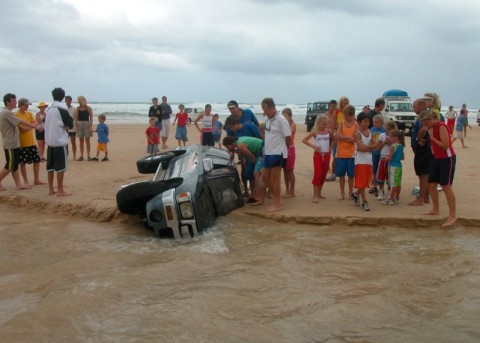 Say no more! Say no more!
.
Bree Jashin of the Fraser Island Dingo Preservation Group says tourists feeding and teasing dingoes on Fraser Island could lead to the extinction of the native dogs on the island. Ms Jashin provided AAP with a photograph of tourists kicking sand at dingoes and a first-hand account of another incident between tourists and a dingo pup, which she said could elicit a reaction and lead to the dingo’s destruction by rangers.
“The right for humans to play at the expense of the future of the only thoroughbred dingoes left is unacceptable,” Ms Jashin said. “Fraser Island is the dingoes’ home and humans have to remember they are guests in that home.
Chris Druery was among a group of three visitors in a four-wheel-drive south of Eli Creek on Fraser Island on October 1 last year when they saw an approaching vehicle drive directly towards a dingo pup.
“[The driver] pointed their vehicle directly towards the pup and sped up, attempting to run it down,” Mr Druery said. “They also swerved violently towards the pup, missing it by only centimetres. “We watched the pup cower and run towards the surf with its hind legs tucked up under its rear end.”
Mr Druery said those in the offending four-wheel-drive were laughing during their attempts to run the dingo down. “It is disappointing that such a jewel in the crown can be tarnished by clowns that drive dangerously on the beach,” he said.
Ms Jashin said the three dingoes in photographs she snapped last year were heading towards Eurong township beachfront when they were harassed by backpackers.
“The pups were simply minding their own business when the girls screamed and the young male backpacker began to aggressively yell, run at, and kick sand at the pups,” she said.
Rather than dissuade the dogs, the yelling attracted them towards the group. “The backpackers all jumped in the vehicle and drove up close to them to take pics,” she said. She said all three of the pups had been destroyed after exhibiting allegedly aggressive behaviour towards humans.
[Source: ‘Tourists ‘threatening dingo extinction’, by AAP, 20100317, ^http://www.smh.com.au/environment/conservation/tourists-threatening-dingo-extinction-20100317-qe1o.html].
.
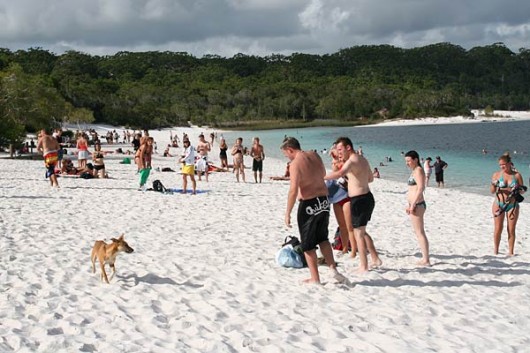 Uncontrolled tourist interation with Fraser Island’s wild dingoes
Tourists and wildlife don’t mix – when will Parks Management get the message ?
DERM is not a tourist operator. Fraser Island is a World Heritage National Park for wildlife. Uncontrolled tourist interation with Fraser Island’s wild dingoes
Tourists and wildlife don’t mix – when will Parks Management get the message ?
DERM is not a tourist operator. Fraser Island is a World Heritage National Park for wildlife.
.
Fraser Island is a wildlife World Heritage sanctuary, not another Hamilton Island Resort!
.
Last September 2011, some bored National Parks officers decided to start a fire on the island. They excused it as a ‘controlled burn’, but is is arson no less and surprise surprise, it got out of control. “It was going for five or six days, and the weather changed and it took off in a different direction, unfortunately. “These things are part of life. In most national parks you need to reduce the fuel load.”
The vandals need to be sacked (including the manager for probably inciting it) banned from Fraser Island and fined for the cost of the emergency response by the 18 fire fighters from Rural Fire Brigade, Queensland Fire and Rescue Service and the 4 waterbombing aircraft.
[Source: ‘A resort on Fraser Island is threatened by a grass fire, which appears to have started with a controlled burn’, by AAP, 20111003, ^http://www.theaustralian.com.au/news/nation/a-resort-on-fraser-island-is-threatened-by-a-major-grass-fire/story-e6frg6nf-1226156969941]
.
Queensland’s Fraser Island was inscribed on the World Heritage List in 1992 after nearly twenty years battle and public debate.
Once it was listed, the Queensland Government has maliciously abused the world heritage for tourism and recreation, allowing the precious island to become so degraded that some people are now arguing that it needs to be placed on the World Heritage in Danger List. (Ed: It should be, right now).
‘It isn’t that Fraser Island lacks the values that warranted its World Heritage listing in the first place. It is just that the management values for Fraser Island are pre-occupied with recreation Management to the neglect of the protection of its World Heritage values.
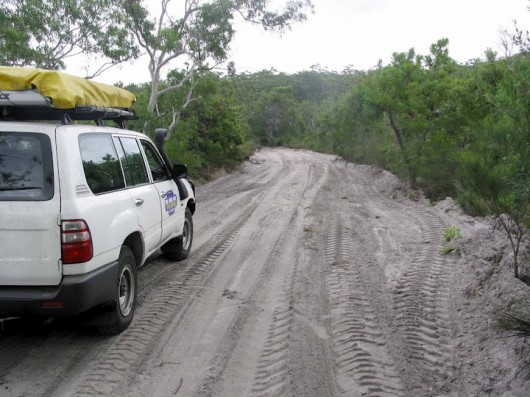 Unmonitored 4WDs
A bit of road widening into Fraser Island’s vegetation Unmonitored 4WDs
A bit of road widening into Fraser Island’s vegetation
.
On Fraser Island ‘bevans‘ rule ok!
‘On Fraser Island 4WD recreational vehicles rule all policy decisions even though environmental studies have conclusively shown the impact of the 4WDs in compacting sand in the substrate and thus accelerating water erosion. The mobilization of sand as a result of this means that over a three year period more than a million tones of sand has been mobilized and sluiced down the slopes. That means over a tonne of sand it relocated for every visitor to Fraser Island!
‘Some roads are now scoured down to a depth of 4 metres and they continue this on-going down-cutting every time it rains. As little as 5mm of rain is more than enough to start mobilizing surface sand on roads. Some of the sand is deposited lower down the slopes; other sand is being sluiced into the iconic perched dune lakes.
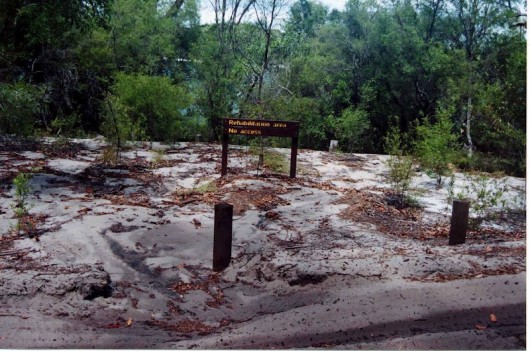 Road to McKenzie – the Parks Service must have gone AWOL Road to McKenzie – the Parks Service must have gone AWOL
.
Some of the sand is deposited so that picnic tables begin to get buried and other picnic spots are being scoured out demonstrating the fragility and mobility of any disturbed soil surface on Fraser Island.
‘In 1963 Indian Head had a lawn of thick grass extending right to its summit. Since then the unprotected surface soil has been disturbed but hundreds of thousands of feet. This has been eroded and washed away by rain exposing an ever expanding area of bare rock. There are no plans to repair the damage or rectify this problem in the foreseeable future.
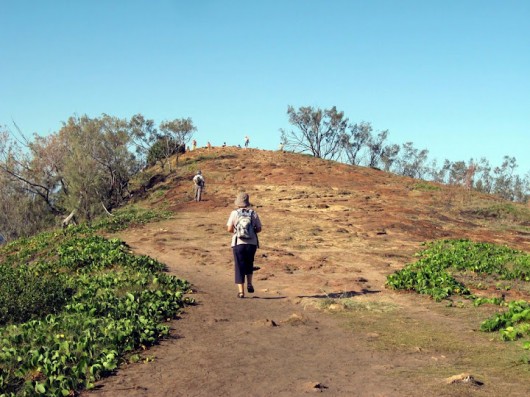 Indian Head degradation by excessive uncontrolled tourism.
Where are DERM Parks Management – off lighting grass fires?
. Indian Head degradation by excessive uncontrolled tourism.
Where are DERM Parks Management – off lighting grass fires?
.
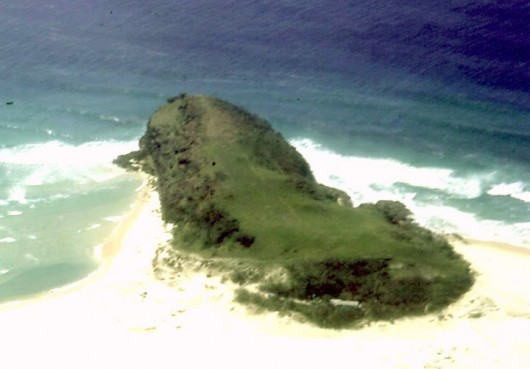 Indian Head vegetation back in 1974 Indian Head vegetation back in 1974
.
‘A disproportionate amount of the budget is spent on recreational facilities, visitor safety and management, waste management. Road widening and upgrading has become an obsession. This focus has led to the neglect of research and the natural resource management, — environmental monitoring of wildlife and ecosystems, fire management, weed control, and quarantine.’
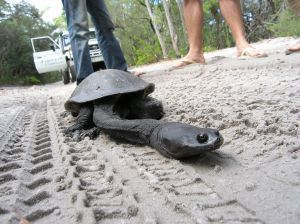 Fraser Island’s native long-necked turtles
vulnerable to 4WD hoons Fraser Island’s native long-necked turtles
vulnerable to 4WD hoons
.
‘The preoccupation with recreation management on Fraser Island is encouraging more and more visitors to visit Fraser Island in unsustainable ways. Recreation is degrading Fraser Island’s World Heritage values including its iconic lakes. Recreation management is at the expense of managing the island’s natural resources. These suffer from lack of adequate monitoring. No monitoring of the water quality in the lakes was done for a decade while road run-off continues to pour into the lakes impacting on water quality.’
 Ongoing sand dune damage by unmonitored 4WDs
Tourist access on Fraser Island has become a free-for-all ! Ongoing sand dune damage by unmonitored 4WDs
Tourist access on Fraser Island has become a free-for-all !
.
Fraser Island has less than one kilometre of boardwalks. Queensland government policy prevents any feasibility into developing an environmentally more sustainable light rail people mover there. Yet compared with Gunung Mulu National Park in Malaysia, listed eight years after Fraser Island, with exactly a tenth of the visitor number of Fraser Island puts Fraser Island management to shame.
[Source: ‘Queensland’s shameful management of the Fraser Island World Heritage site‘, by John Sinclair, 20100702, ^http://randomkaos.com/node/14, (John Sinclair is one of Australia’s leading nature conservationists and has lead the fight to save Fraser Island since 1971 when he founded the Fraser Island Defenders Organisation)]
.
In 2007 an Irish backpacker tourist, Evan Kelly, while on Fraser Island thought it was a good idea to run down a sand dune into Lake Wabby. He did this several times then landed head first in the lake, hurt his back then sued the Queensland Government and the backpacker hostel, Pippies Beach House, for failing to warn him of the dangers.
Previously in 2006, tourist Su Chul Jang from South Korea, decided to run down a sand dune and dive into Lake Wabby, but became a quadriplegic and sued the tour company Fraser Escape 4×4 Tours Pty Ltd and the Queensland Government.
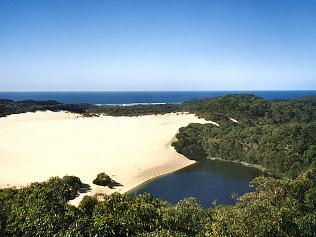 Leave Lake Wabby alone! Leave Lake Wabby alone!
.
[Source: Fraser Island backpacker sues Queensland Government, tourism operators for injuries at Lake Wabby’ by Kay Dibben, The Sunday Mail (Qld), 20100829, ^http://www.couriermail.com.au/news/queensland/fraser-island-backpacker-sues-queensland-government-tourism-operators-for-injuries-at-lake-wabby/story-e6freoof-1225911278600]
.
What’s the full cost of Fraser Island tourism?
.
The Queensland Government’s World Heritage management of Fraser Island has been called into question internationally over claimed incompetence and malice.
Opposition Shadow Sustainability Minister Glen Elmes said he had “taken steps to ensure that UNESCO, the organisation charged with overseeing World Heritage listed areas, has been advised of the island’s plight”. He described island management as “incompetent at best” and a betrayal of state government conservation obligations.
Mr Elmes accused her Department of Environment and Resource Management of a major cover-up of mismanagement, environmental damage and “ruthless and cruel” policies on dingo management. Mr Elmes told Parliament this week that he had read the report, estimating the death of 97 dingoes from causes listed in autopsy reports as “lethal injection, shot, run over, poisoned, starvation and others”.
“One autopsy lists under possible cause of death, ‘rifle-itis,’ while another states ‘half an ounce of hot lead,” he said. “Labor’s interim report shows happy snaps of a dingo family, dingoes on the beach, dingoes frolicking in the water, a dingo running up the beach with a fish in its mouth. “On a normal day, those dingoes would be hazed by rangers – that is shot with a clay pellet, moving them away from the beach and away from their main food source,” he said.
[Source: Claims of Fraser Island ‘cover-up’ by Arthur Gorrie, 20100902, ^http://www.gympietimes.com.au/story/2010/09/02/Fraser-Island-cover-up-claimed/]
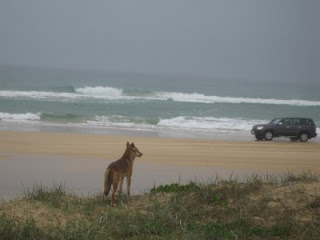
.
Meanwhile the Queensland Labor Government’s only interest for Fraser Island is more tourism development.
In September 2010, Federal Labor Environment Minister Tony Burke and Queensland’s Bligh Labor Government’s Climate Change and Sustainability Minister Kate Jones opened a joint $3.4 million tourist facilities at Lake McKenzie on Fraser Island.
.
“This is great for tourism on the island and great news for the Hervey Bay economy.”
~ Kate Jones’ 20th Century mindset for world heritage.
.
Labelling it “eco-friendly”, the modern facilities include:
- More vehicle access routes
- A bigger car park
- Wider pedestrian access to the beach
- More toilets
- More viewing platforms
- Improved signage
- Oh and extensive site revegetation. Nice.
.
[Source: ‘Ministers officially open major upgrade to facilities at Lake McKenzie’ (Labor joint media release), 20100923, ^http://www.environment.gov.au/minister/burke/2010/mr20100923.html]
.
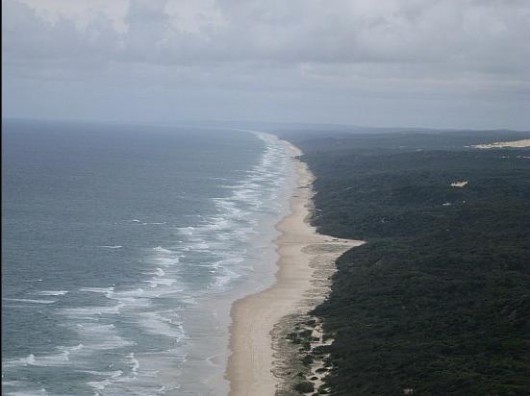 Fraser Island’s 75 Mile Beach
…clear of ferals of all types Fraser Island’s 75 Mile Beach
…clear of ferals of all types
.
It is time to place Fraser Island on the World Heritage in Danger List, get all the ferals including the tourists and their profiteers off the island and to commence the job and investment of serious World Heritage management of one of the planet’s remaining important nature assets.
.
Tigerquoll
Suggan Buggan
Snowy River Region
Victoria 3885
Australia
 Lake Boomanjin on Fraser Island,
Supposedly protected
(Photo by Steven Nowakowski, click photo to enlarge) Lake Boomanjin on Fraser Island,
Supposedly protected
(Photo by Steven Nowakowski, click photo to enlarge)
.
Further Reading:
.
[1] ‘ Queensland’s shameful management of the Fraser Island World Heritage site‘, by John Sinclair, 20100702, ^ http://randomkaos.com/node/14, (John Sinclair is one of Australia’s leading nature conservationists, has lead the fight to save Fraser Island since 1971 when he founded the Fraser Island Defenders Organisation).
.
[2] ‘ Fighting Ferals on Fraser Island‘, by Fraser Island Defenders Organization (FIDO) “The Watchdog of Fraser Island”, aims to ensure the wisest use of Fraser Island’s natural resources, ^ http://www.fido.org.au/education/FightingFerals.html
.
Tuesday, February 7th, 2012
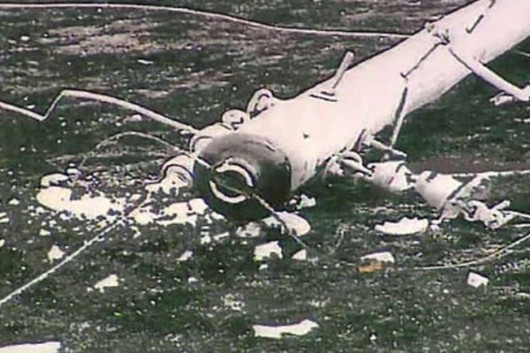 SP AusNet’s power pole near the one believed to have ignited the East Kilmore Bushfire of 2009
(Source: ABC, ^http://www.abc.net.au/news/2009-11-18/this-power-pole-is-near-where-the-kilmore-bushfire/1159986) SP AusNet’s power pole near the one believed to have ignited the East Kilmore Bushfire of 2009
(Source: ABC, ^http://www.abc.net.au/news/2009-11-18/this-power-pole-is-near-where-the-kilmore-bushfire/1159986)
.
Today marks the third anniversary of the 2009 Victorian Bushfires. People reading this do so because they are interested in understanding and seeking answers, and so do I. This is one reason why I write. (Editor)
After a Royal Commission and much government promising, the test of faith is do people in regional Victoria feel safer from the risk of bushfire and confident that the subsequent actions by government at all levels are better prepared to mitigate a repeat of 2009?
The first two terms of reference of the Royal Commission into the 2009 Victorian Bushfires were to investigate:
1. ‘The causes and circumstances of the bushfires which burned in various parts of Victoria in late January and in February 2009 (“2009 Bushfires”).’
2. ‘The preparation and planning by governments, emergency services, other entities, the community and households for bushfires in Victoria, including current laws, policies, practices, resources and strategies for the prevention, identification, evaluation, management and communication of bushfire threats and risks.’
.
The underlying premise of the entire investigation was not about attributing individual blame per se, although some of that has been attributed two a few individuals, but to understand why the devastation was of such a scale and impact, with a view to learn from the tragedy and to better prepare for the future. Loved ones cannot be returned, but from their loss our society needs to learn and protect itself from a repeat. It has happened before. This editor was in Melbourne during the 1983 Ash Wednesday bushfires. It must not happen again.
.
Causes of the 2009 Victorian Bushfires
.
People rightly wanted to know the direct causes and circumstances of the fires, about emergency management of the fires, bushfire detection, the warnings given or not given, about bushfire preparedness.
Well the final report of the Royal Commission grouped the causes of the bushfires according to their separate geography as follows:
1. Delburn Fires cause: “suspicious“
2. Bunyip Fire cause: “suspected lightning“
3. Kilmore East Fire cause: “electrical failure“
4. Horsham Fire cause: “electrical failure“
5. Coleraine Fire cause: “electrical failure“
6. Pomborneit–Weerite: “electrical failure“
7. Churchill Fire cause: “suspicious“
8. Murrindindi Fire cause: “suspicious“
9. Redesdale Fire cause: “undetermined“
10. Narre Warren at Harkaway cause: “accidental“; at Lynbrook: “not determined“
11. Upper Ferntree Gully Fires cause: “unknown“
12. Bendigo Fire cause: “suspicious“
13. Beechworth–Mudgegonga Fire: “electrical failure“
.
“Most of the major fires that burned in late January and in February 2009 started as a direct or indirect result of human activity.”
.
Main Cause: Overhead Electricity Arcing of a neglected SP AusNet Asset
.
Failure of electricity assets owned and neglected by SP AusNet was responsible for five fires—Kilmore East, Beechworth–Mudgegonga, Horsham, Coleraine and Pomborneit–Weerite.
The causes of four fires—Murrindindi, Churchill, Delburn and Bendigo—are thought to be suspicious (i.e. arson). One fire—Harkaway—was started accidentally. Only the Bunyip fire is thought to have been the result of natural causes (lightning), although fire investigators have been unable to definitively reach this conclusion. The causes of both Lynbrook fires and the Upper Ferntree Gully and Redesdale fires are not known.”
[Source: 2009 Victorian Bushfires Royal Commission, Final Report, July 2010, Volume 1, Chapter 15.1 Conclusions – Fire causes, p.226]
.
These conclusions are far from satisfactory, given the considerable resources and expertise made available to the Royal Commission, and that its number one task from to identify the exact causes of the fires. Why are the conclusions so vague? Is it symptomatic of the inadequacies of CFA bushfire monitoring and investigation skills? What were the delays between the estimate ignitions and the respective onground investigations?
It is easy to become bamboozled by the complexity of the many separate bushfires and their respective causes, the contributing factors and varying responses, and particularly since the Royal Commission final report is so long and unwieldy. I don’t think anyone questions that the bushfire conditions were characterised by many years of drought producing tinder dry bushland and extreme heat and low humidity on the day, which all produced an ‘unprecedented‘ extreme bushfire risk.
But of all the bushfires that occurred in the lead up to and on the day of 7th Februray 2009, the single bushfire that caused the most destruction and tragic loss of life was the Kilmore East Fire. The Kilmore East Fire started about 85 kilometres north of Melbourne and ended up burning easterly across the Hume Highway through the shires of Whittlesea, Nillumbik, Mitchell and Yarra Ranges extending south east 70km.
It burnt through the towns of Wallaby Creek, Humevale, Strathewen, Kinglake, Kinglake West, Clonbinane, Steels Creek, Chum Creek, St Andrews, Dixons Creek, Yarra Glen, and Strathewen. Then the wind changed southerly and raged the fire on to Pheasant Creek, Yabamac, Flowerdale, Hazeldene, Castella, Break O’Day, Glenburn and Toolangi.
The fire burnt an overall area of 125,383 hectares, roughly 70 km long and 20 wide, as shown on the following fire map.
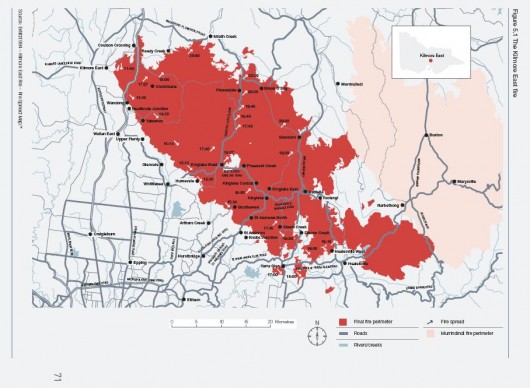 Kilmore East Fire (dark red area)
Click to see enlarged map (320kb) – arrows show when and where the fire wind changed Kilmore East Fire (dark red area)
Click to see enlarged map (320kb) – arrows show when and where the fire wind changed
The adjacent fire (pink area) was the Murrindindi Fire which was started by arson (deemed “suspicious” by the Royal Commission)
(Source: VBRC Final Report Vol. 1, Chapter 5, p.71)
.
Of the 173 reported human deaths of the 2009 Victorian Bushfires, 119 (most) were as a consequence of the Kilmore East Fire, which had initially been ignited by a powerpole electrical failure. Another 232 casualties were reported and some 1,242 houses were destroyed by the Kilmore East Fire.
Ultimately, the Victorian Government here is accountable for its delegated arrangements to provide essential services such as electricity supply to the people of Victoria. That Victorian Government under Premier John Brumby and its various prior policies under different political persuasions, chose to outsource electricity provision to a private operator, no less diminishes the Victorian Government’s fuduciary duty for that supply and all its component standards including reliability and least of all, safety. Morally and legally in Australia, no government can outsource its fiduciary duty and then wipe its hands of that fiduciary duty. Both then Victorian Premier Brumby and then Prime Minister Rudd must fall on their swords.
The Kilmore East Fire ignited at midday on 7th February 2009 from electrical arcing at the top of a rocky hill between two gullies near Saunders Road in Kilmore East. A Single Wire Earth Return (SWER) electricity line (the conductor) ran across the gullies. The area where the fire started was undulating pasture interspersed with native vegetation alongside cleared and standing forestry plantations. The conductor formed part of the Pentadeen Spur power line.
The fire started after the conductor between two power poles failed and the live conductor came into contact with a cable stay. This contact caused arcing that ignited vegetation near the base of one of the poles. An electrical fault was recorded at 11:45am. The conductor failed as a result of fatigue on the conductor strands very close to where a helical termination was fitted to the conductor at the pole. The conductor was about 43 years old. A line inspection carried out in February 2008 had failed to identify the incorrectly seated helical fitting.
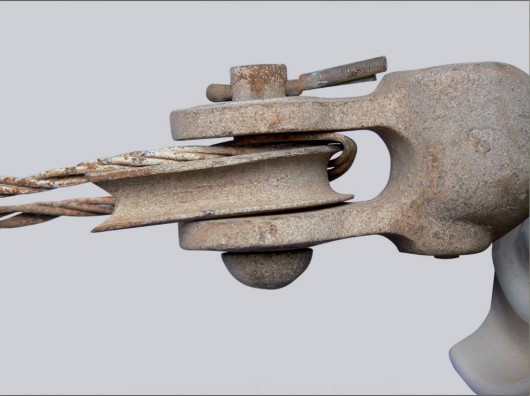 An ill-designed and jammed helical termination
(Click to enlarge and bloody frame if you want!) An ill-designed and jammed helical termination
(Click to enlarge and bloody frame if you want!)
(Source: VBRC, Exhibit 525 – HRL Technology Report – Kilmore East Fire)
.
Within two minutes, a fire tower observer at Pretty Sally tower, Peter Coleman, spotted a column of white smoke at 11:47am about 30 to 40 metres high coming from behind a hill in the direction of Saunders Road, Kilmore East. The fire was reported to the CFA two minutes later at 11:49am.
The volunteer Victorian Country Fire Authority (CFA) Clonbinane Brigade fire truck initially responded, but requested additional resources as it was of an uncontrollable size and was spotting ahead of the fire front into bushland. A decision to escalate the bushfire emergency to an Incident Management Team (IMT) was put in place at 4:30pm, some four and a half hours later in unprecedented extreme bushfire risk conditions and just as the now firestorm was impinging upon the communities of Humevale and Kinglake West – over 20km from the ignition.
[Source: 2009 Victorian Bushfires Royal Commission, Final Report, July 2010, Volume 1, Chapter 5.6 The Kilmore East Fire – Conclusions, pp.75-84]
.
In relation to those bushfires collectively attributed by the Royal Commission as being caused by ‘electrical failures‘, the Commission’s recommendations were:
- Replace ageing powerlines with safer bundled or underground cables
- High-risk areas should have all lines replaced within 10 years and inspected within 3 years
.
Specifically the Royal Commission’s recommendations were:
.
Recommendation # 27:
Progressive replacement of all single-wire earth return power lines in Victoria with aerial bundled cable, underground cabling or other technology that delivers greatly reduced bushfire risk. The replacement program should be completed in the areas of highest bushfire risk within 10 years and should continue in areas of lower bushfire risk as the lines reach the end of their engineering lives the progressive replacement of all 22-kilovolt distribution feeders with aerial bundled cable, underground cabling or other technology that delivers greatly reduced bushfire risk as the feeders reach the end of their engineering lives. Priority should be given to distribution feeders in the areas of highest bushfire risk.
.
Recommendation #28:
Electricity distribution businesses to inspect all SWER lines and all 22-kilovolt feeders in areas of high bushfire risk at least every three years.
.
Recommendation #29:
Electricity distribution businesses to review and modify their current practices, standards and procedures for the training and auditing of asset inspectors to ensure that registered training organisations provide adequate theoretical and practical training for asset inspectors.
.
Recommendation #30:
Electricity distribution businesses adopt measures to reduce the risks posed by ‘hazard trees’
.
Recommendation #31:
Municipal councils include in their municipal fire prevention plans for areas of high bushfire risk provision for the identification of hazard trees and for notifying the responsible entities with a view to having the situation redressed.
.
Recommendation #32:
Electricity distribution businesses to disable the reclose function on the automatic circuit reclosers on all SWER lines for the six weeks of greatest risk in every fire season, adjust the reclose function on the automatic circuit reclosers on all 22-kilovolt feeders on all total fire ban days to permit only one reclose attempt before lockout.
.
Recommendation #33:
Electricity distribution businesses to fit spreaders to any lines with a history of clashing or the potential to do so fit or retrofit all spans that are more than 300 metres long with vibration dampers as soon as is reasonably practicable.
.
Recommendation #34:
The State amend the regulatory framework for electricity safety to strengthen Energy Safe Victoria’s mandate in relation to the prevention and mitigation of electricity-caused bushfires and to require it to fulfill that mandate.
[Source: 2009 Victorian Bushfires Royal Commission, Final Report, July 2010, Volume 1, Summary & Recommendations, pp.29-30]
.
The test of faith is do people in regional Victoria feel safer from the risk of bushfire and confident that the subsequent actions by government at all levels are better prepared to mitigate a repeat of 2009?
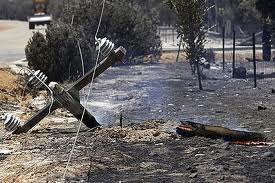 . .
Tags: 2009 Victorian Bushfires, Break O'Day, bushfire arson, Castella, causes, Chum Creek, Clonbinane, Dixons Creek, Failure of electricity assets, Flowerdale, Glenburn, Hazeldene, Humevale, jammed helical termination, Kilmore East, Kilmore East Fire, Kinglake, Kinglake West, Murrindindi Fire, Pheasant Creek, Power pole, recommendation, Regional Victoria, Singapore Power, SP AusNet, St Andrews, Steels Creek, Strathewen, Toolangi, Victorian Bushfires Royal Commission, Wallaby Creek, Wong Kim Yin, Yabamac, Yarra Glen
Posted in Threats from Bushfire | No Comments »
Add this post to Del.icio.us - Digg
Monday, January 23rd, 2012

“It will get worse before it gets better...Saturday, Sunday are going to be pretty extreme days once again. Temperatures will be at least in the low 40s.”
.
~ sound byte by Fairfax Media, Journalist Tim Young using a provocative sound byte from Dr Chris Ryan, Australian Bureau of Metereology at a media conference on Friday 6th February 2009.
.
Amongst the tragedies of the 2009 Victorian Bushfires – the catastrophic loss of 173 lives, many more people injured and traumatised, the massive loss of livestock and property, unmeasured fauna killed, and bushfire history repeating itself – was the excited media (and Victorian Premier John Brumby personally) dramatising on State television, newspapers and radio about an impending extreme bushfire risk.
Gippsland was already two weeks into a series of bushfires that were known to have been lit by arsonists – the Bunyip Bushfire and the Delburn Bushfire and these dominated the headlines. The media focus on the bushfires were about ‘scoops’ and sensational journalism. It had grown into a media infatuation. Every new bushfire story attracted headline news. To a dormant arsonist, such messages would have been a red rag to a bull.
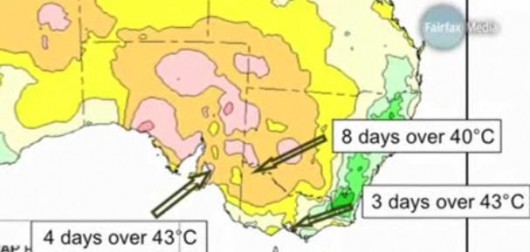 Record temperatures publicised with emphasis like never before
…on Friday 6th February 2009 Record temperatures publicised with emphasis like never before
…on Friday 6th February 2009
.
Victoria was in a severe long drought (like the 1983 Ash Wednesday Bushfires) with tinder dry bushland and extreme hot windy and dry weather conditions that the Victorian Country Fire Authority (CFA) had acknowledged as causing the forecast bushfire risk index for the coming weekend to fly off the scale.
Yet while the media and the Premier were effectively scaremongering, the CFA publicly stated that it was prepared for the weekend of 7th and 8th February 2009. This public confidence misleadingly lulled Victorians into a false sense of security and confidence in bushfire management business as usual, and contributed to the tragedy of long horrific day’s journey into night that unfolds.
The following media articles dated the morning of Saturday 7th February 2009 are reproduced here, the first a full double page spread in Fairfax’s ‘The Age’ newspaper on pages 4 and 5:
.
‘The sun rises on our ‘worst day in history’
[Source: ‘ The sun rises on our ‘worst day in history‘, by Ben Doherty and Erdem Koch, The Age (morning newspaper), 20090207, ^ http://www.theage.com.au/national/the-sun-rises-on-our-worst-day-in-history-20090206-7zzf.html]
 Grape grower Lou Bennett with some of his crop scorched in the recent hot weather.
He estimates about 30% of his crop has failed, burnt dry by the sun.
(Photo: Glenn Milne) Grape grower Lou Bennett with some of his crop scorched in the recent hot weather.
He estimates about 30% of his crop has failed, burnt dry by the sun.
(Photo: Glenn Milne)
.
Today is likely to be among the hottest on record in Victoria, and the effects of the heatwave are adding up across the state.
The weather bureau tells Lou Bennett it’s 44 degrees (Celsius). But he trusts better his own thermometer, rigged up on the back verandah. It says 52.
It doesn’t really matter anyway, whatever the number, the sun feels oppressively, infernally hot, and he’ll be out in it.
Warnings from the Premier about today’s heatwave being “the worst day in the state’s history” don’t carry much weight with growers around Red Cliffs, near Mildura in Victoria’s north-west corner. There’s been plenty of tough ones already.
“Out on the farm it’s pretty hot, but whatever it is we’re out there in it,” Mr Bennett said. “Sometimes you’re lucky and you’re in the air-conditioned tractor, but most of the time you’re on the shovel or the motorbike.”
Straitened times have forced Mr Bennett to let his farmhands go. “Now I’ve got my kids coming out in 40-degree heat after school to help.”
By Mr Bennett’s count, today will be the 12th straight over 40 degrees at his place. It has sapped the life from his plants. He lost two complete hectares in one scorching morning, as well as about 30 per cent of his crop overall.
“It’s not just me, it’s everybody. It’s my neighbours, my friends. Your family suffers.”
Farmers across Victoria are suffering similarly. Growers in the Goulburn Valley are writing off crops of pears, apricots and apples ruined by sunburn.
In shearing sheds across the state, sheep have been passing out, overcome by the heat and the heavy fleece they’re carrying (a good rouseabout carries a bottle of water in hot weather to revive them).
Today is set to be the worst of the lot. Across the state, blistering temperatures are predicted, up to 46 degrees in the Mallee, while Melbourne will reach 44.
Northerly winds, gusting up to gale force at 100 km/h, will run across the state, with the potential to fan bushfires across tracts of tinder-dry land.
All sorts of records are being broken. Twelve straight days over 40 in the Mallee smashes the previous state record of nine days. By tonight, Melbourne will have gone 34 days without rain, the third worst dry spell on record.
The heat has also pushed the state’s morgue to its capacity. The Victorian coroner took in 50 bodies a day during last week’s heatwave — more than three times the average rate.
State coroner Jennifer Coate said yesterday that her office had to arrange for hospitals and funeral directors to store the bodies of people whose deaths required further investigation.
Imposing a statewide total fire ban for today, the CFA said the whole state was at extreme risk.
.
Premier John Brumby (on the Friday prior) warned that conditions were comparable to 1983’s deadly Ash Wednesday.
.
“It’s just as bad a day as you can imagine and on top of that the state is just tinder-dry,” he said. “People need to exercise real common sense … If you don’t need to go out, don’t go out, it’s a seriously bad day. If you don’t need to travel, don’t travel. Don’t go on the roads. If you don’t need to use the public transport system, don’t use it. If you can stay at home, stay at home.”
.
V/Line has told people not to travel to Gippsland unless they have to, warning that the Bunyip bushfire would likely disturb coach and train travel.
The Premier urged people to look after the elderly, infirm and vulnerable.
“Ring them … it’s going to be a terrible day for anyone who is ill or who is old,” he said.
Yesterday, the Federal Government issued a directive to nursing homes, requiring them to monitor 170,000 residents across the country. Nursing homes in Victoria and South Australia face spot checks and audits of their air-conditioning systems, following complaints.
Water Minister Tim Holding excused Victorians from their water saving for a day, saying people needed, above all else, to keep cool.
Water consumption peaked at 283 litres per person in Melbourne last Friday, when the temperature hit 45. The average for this summer has been 172 litres per person per day.
Power outages, which wreaked havoc across the state last week, are again a real possibility, with power companies urging people to prepare to do without electricity.
The peak of the extreme heat is likely to push the state’s power capabilities to their limit, while the afternoon change could bring winds that will bring down trees across power lines.
Victoria is preparing for the worst. Sport is being cancelled.
Two and four-legged competitors are heading for the shade. Cricket matches are being moved or called off, while the Classic Dog Show, which was to feature 1200 of Victoria’s most pampered and prize-adorned pups, has been cancelled.
Racing at Caulfield, including the Group 1 Orr Stakes, has been put back to Sunday. The only horses racing today will be at the non-TAB picnic meeting at Buchan in East Gippsland.
But punters with an itch to unload can still have a wager.
Online bookmakers are laying bets on just how hot it will be in Melbourne today.
However, no one’s betting against Lou Bennett summoning the courage to brave the heat, regardless of what the mercury tells him.
“You can’t stay inside, mate, you’ve got to get outside and get it done, because no one else is going to do it for you,” he says.
.
‘Town in fury over bush arsonist’
[Source: ‘Town in fury over bush arsonist’, by Chris Johnston, The Age, p.5, 20090207, ^ http://www.theage.com.au/national/town-in-fury-over-bush-arsonist-20090206-7zzj.html]
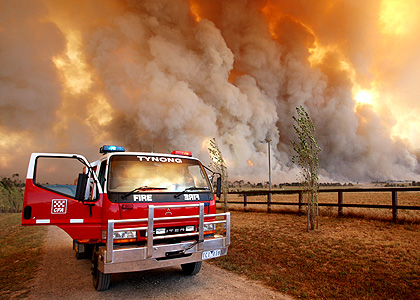
Most unnerving of all for Boolarra residents, is that whoever lit the fires may well be one of their own.
At the peak of the devastating Boolarra bushfires eight days ago it was, according to a local, like “a war zone without bullets”. Helicopters in the sky, panic in the streets. Sirens and explosions. The burnt-out shells where houses once stood.
The fires are now contained, but today’s extreme hot and windy conditions — tipped to be the worst in the state’s history — will be terrifying in this pretty village in Gippsland’s foothills.
It could all go up again. But they know that. They are ready. The firefighters have been working towards this day all week.
The deeper problem is something that no one really knows how to handle. The fires were deliberately lit and the close-knit community of 600 is seething. There are whispers of revenge and vigilantes, of bush justice. No one can believe anyone would do such a thing.
The talk is about how whoever did this must be a “sick bastard” and how they should be strapped to a tree in the next firefront and left to burn to “see how they like it”. Someone said that if caught, they would need police protection because the town wants blood.
“People and families here are scared and angry,” said Rob Herni, who grows tree ferns and chairs the local community development group. “And I don’t think there’s any reason for them not to be. Lives have been put at risk, homes destroyed, livelihoods gone. Plenty of people would want an hour or two with the culprits, I can tell you. Normally sane people threatening all kinds of things.”
The fires reached a peak last Friday. That was when they were coming on three fronts, the power was out and the drinking water was contaminated.
Thirty houses, 82 sheds, nine cars and a pig farm were destroyed in 6500 hectares around Boolarra, Mirboo North, Darlimurla and Yinnar, all in the Strzelecki Ranges south of Morwell. That no one died either fighting it or caught in it is seen by the community as a miracle.
Police yesterday announced a new taskforce to investigate the fires and said the driver of a dark silver or grey Toyota Hilux single-cab utility could be the firebug after such a vehicle was seen at the ignition points. Two men were questioned last week but released. The Age believes they were apprehended at the Boolarra CFA staging ground last Thursday, but were not CFA members. A $100,000 reward has been posted.
Boolarra CFA captain Todd Birkbeck believes he knows how it played out. His pager went off at 7.30am last Wednesday; a fire had been lit in the forested hills behind the Boolarra goldfish farm. It was put out but lit again later that day. The next day, he said, another was lit near a track off Creamery Road, near Yinnar, and another at Lyrebird Walk, near Mirboo North.
“By last Thursday night the three had joined up,” he said. “That was the problem. There was no lightning. Fires don’t light up on their own.”
His wife, Michelle, said she and most others were anxious, paranoid and on edge. She heard a motorcycle out in the trees one night, when the fires were out, and feared the worst. It was someone checking fences.
“It’s surreal,” she said. “Nervy. Everyone’s jumping at shadows. You could be talking to them, you don’t know. You see a stranger and you wonder. It’s horrible.”
Mr Herni said he was paranoid about having to drive some mower fuel home to Boolarra from Yinnar today. “Does that make me an arsonist?” he asked. “In the eyes of others?”
The most difficult thing for people to understand is that the arsonist may well be one of their own. Forensic psychologist Rebekah Doley, Australia’s only criminal profiler of bushfire arsonists, said most lived within 10 kilometres of the scene.
“They have knowledge of the landscape and they know where to set the fire best to achieve what they want,” she said.
The culprit was likely to be a male loner with a dysfunctional background who lit the fires to exert power over a community in which he felt powerless.
“They need to assert themselves in some way and fire is a very universally powerful tool to do that so it’s about the experience of the fire rather than setting the fire itself,” she said.
She said serial arsonists were common and the Boolarra firebug could strike again.
“They have to demonstrate they still have the power even if they know police are on their tail.”
She said a serial arsonist was someone with a “deep-seated, long-term interest in fire” who used it as coping tool to relieve emotional tension.
A recent Australian Institute of Criminology report into bushfires said they cost the country $1.6 billion a year and half — about “20,000 to 30,0000” — were deliberately lit.
All this is unthinkable to the people of Boolarra. It has happened to them before — and in the towns nearby like Churchill — but it never makes sense. They live in the trees here, in a village, a hidden valley. Why would someone destroy that, why tear the community apart? With fire, of all things.
“I don’t have any of the answers,” said Rob Herni. “All I know is that people are scared. There’s a lot of fear, real fear. Where are they going to light a fire next? And when?”
.
Read Reports by the Australian Institute of Criminology
(Each 150kb)
[1] >The Cost of Bushfires (AIC, 20041123).pdf
[2] >Firefighter Arson Pt1 (AIC 20050607).pdf
[3] >Firefighter Arson Pt 2 (AIC 20050621).pdf
.
.
Editor: Early Afternoon of Saturday 7th February 2009 – the reports start coming in…
.
‘Fire crews retreat as strong winds fuel flames’
[Source: ‘Fire crews retreat as strong winds fuel flames’, by Robyn Grace, AAP, 20090207, ^http://www.theage.com.au/national/fire-crews-retreat-as-strong-winds-fuel-flames-20090207-806a.html]
.
The Country Fire Authority has issued a number of urgent threat messages as fire activity increases throughout the state.
Ground attack firefighters were earlier forced to retreat from a bushfire burning through the Bunyip State Forest east of Melbourne after the blaze broke containment lines.
Emergency authorities were forced to pull their ground crews out of the fire ground in the Bunyip State Forest, near Pakenham, this morning because of the escalating risk as forecast strong winds began blowing through the area.
Authorities have warned power supplies may be at risk as bushfires near power lines.
Officials also warned people to stay away from the forest area after recreational four-wheel drivers and trail bikers were spotted heading into the state parkland.
“We put road closures in place because unfortunately we’ve had people who’ve tried to go out into the bush early this morning,” incident controller David Nugent said.
“We have got some closures in place in areas like Bunyip State Park. We had people go out there this morning, which is really disappointing to us. It’s not a very good idea to be out in the bush today, particularly around the fire area where we are trying to do our work on the fire.”
More than 100 firefighters are desperately working to contain the fire in Bunyip State Park as it nears a number of small townships.
The fire broke through containment lines about 3am today and crews now fear the worst as the humidity drops and winds reach predicted levels.
Victorians were yesterday told to brace for its worst day in history with 44-degree heat, gale-force winds and tinder-dry conditions fuelling the fire threat.
“Everything is going according to predictions unfortunately,” Department of Sustainability and Environment state duty officer Stuart Ord told Sky News about 8am.
Firefighters worked in shifts overnight to try to contain the fire near Pakenham in Melbourne’s east.
After the blaze broke control lines overnight, DSE crews were forced to retreat because of the escalating risk and difficult terrain.
Mr Nugent said the change in tactics meant only aircraft crews were deployed to waterbomb the 165-hectare blaze in an effort to limit its potential, before weather conditions took a forecast turn for the worse.
The communities of Labertouche, Jindivick West and Tonimbuk are now on high alert as winds push the blaze in a south-easterly direction.
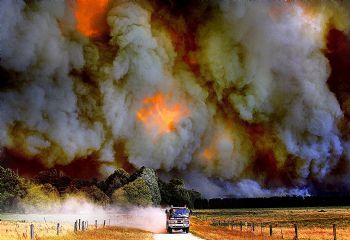
The fire is spotting in multiple areas. The Country Fire Authority said the fire was not currently posing a threat but activity had increased and it had the potential to impact on towns directly.
Residents have been warned to expect increased smoke and embers within the next two hours. They have also been told to be prepared to activate their bushfire survival plans if necessary.
Mr Ord said flames were 10 metres tall in some parts of the fire. Dry lightning in other parts of the state were also a concern, he said.
DSE incident controller David Nugent said fire crews had worked tirelessly in an effort to minimise the anticipated spread of the fire.
“Our bulldozer operators have worked non-stop to build control lines around the fire edge and this effort has been greatly enhanced by the work of firefighting aircraft,” Mr Nugent said.
Firefighting aircraft included the Elvis Erikson aircrane, fixed-wing aircraft dropping retardant on the perimeter of the fire and two medium water-bombing helicopters.
Mr Nugent said the power easements supplying Melbourne and other parts of Victoria remained a key issue.
Melbourne Water has released extra water into the Taraoo aqueduct to fight the expected fires.
CFA spokesman Paul Little said a forecast change in wind direction later today could mean the fire front grows from one or two kilometres to several kilometres in width, creating more challenges for fire crews trying to contain the blaze and protect assets.
“Right now, we’ve got crews strategically placed around Labertouche and other areas ready to respond,” Mr Little said. “But what happens later … we’ll have to wait and see. If the wind changes direction, we’ll have a small firefront grow into a massive firefront and that won’t be good.’‘
The rest of south-east Australia is also gearing up for a horror weekend of extreme heat and bushfires.
In Adelaide, the temperature is expected to peak at 41 on Saturday with the mercury in some South Australian country areas tipped to go even higher.
Tomorrow, temperatures are likely to top 47 degrees in parts of NSW.
The CFA advises:
- Tourists are advised to avoid the following areas: Bunyip State Park, Kurth Kiln Regional Park, Tarago Forest and surrounding areas.
- Road closures currently in place: Intersection of Beenak Road and Launching Place Road, intersection of Princes Freeway and Tynong North Road, intersection of Princes Freeway and Bunyip Road, and intersection of Forest Road and Labertouche North Road.
- Emergency relief centres are located at: Warragul Leisure Centre.
For information on fires in Victoria and general fire safety advice, contact the Victorian Bushfire Information Line on 1800 240 667. Callers who are deaf, hard of hearing, or have a speech/communication impairment may call textphone/ telewriter on 1800 122 969. Information is also available at www.dse.vic.gov.au/fires.’.
.
‘Death toll may reach more than 40: police’
[Source: ‘Death toll may reach more than 40: police’, 20090207, AAP, ^http://www.theage.com.au/national/death-toll-may-reach-more-than-40-police-20090207-80ao.html]
“Email your photos to scoop@theage.com.au”
.
Fourteen people have been killed in the savage bushfires which set Victoria ablaze today. Victoria police confirmed the deaths tonight and said they fear the figure may be more than 40.
At least 100 homes have been destroyed as nine major blazes burnt out of control across Victoria in the worst fire conditions in the state’s history.
Deputy police commissioner Kieran Walshe said all the deaths were in a massive blaze northwest of Melbourne – six at Kinglake, four at nearby Wandong, three at Strathewen and one in Clonbinane.
Mr Walshe said he believed the Kinglake victims were all in the same car. He believed arsonists were responsible for some of the nine major fires ripping across the state.
“We suspect a number of the fires have been deliberately lit,” Mr Walshe told reporters. “This is an absolute tragedy for the state and we believe the figure may even get worse,” Mr Walshe said. “We base that on the fact we’re only just getting into these areas now … to search buildings and properties these have been very very significant fires … the figure could get into the 40s.’‘
The fire started in East Kilmore, 80km north of Melbourne, and covered a huge area as it pushed 30km east to Kinglake, through the small townships of Wandong, Strathewen and Clonbinane.
Mr Walshe said he could not determine whether the victims were civilians or firefighters. He said identifications could not be carried out until at least Sunday. One man, aged in his 40s, is in critical condition after suffering burns to 50 per cent of his body when he tried to move stock in the Coleraine area in the state’s west.
More than 3,000 firefighters and many more residents battled major fronts at Horsham, Coleraine, Weerite, Kilmore East, Bunyip, Churchill, Dargo, Murrindindi and Redesdale in all corners of the scorched state as the searing heat in the mid 40s and high winds exceeded authorities’ predictions of the worst fire conditions in the state’s history.
The Kilmore region in the north and several areas of Gippsland in the east were on high alert as an uneasy dusk fell on Saturday night, while the Horsham fire was downgraded early in the evening.
Fifty houses were reportedly lost in the Bendigo area in the Redesdale blaze and up to 30 houses went up in the Kilmore fire which pushed across Whittlesea and into the town of Kinglake, northwest of Melbourne, which one resident said had gone up in flames.
“The whole township is pretty much on fire,” Peter Mitchell told ABC Radio.
“There was was no time to do anything … it came through in minutes. There’ll be a massive loss of houses … There’ll be a lot of us homeless. All those who have made it into town will be fine. The others will be sheltering and working on their fire plans, God help them.”
Mr Mitchell said he was with around 200 residents holed up in the local pub and that no fire trucks could get into the town.
Thousands more residents in the region were sheltering wherever they could find cover as they were warned the worst was to come overnight.
A cool change early this evening did not bring any respite but, in fact, was expected to create more volatile conditions.
“It hasn’t helped the firefighters, only presented them with new fronts,” the Country Fire Authority (CFA) spokeswoman said.
The CFA and DSE (Department of Sustainability and Environment) warned Victorians to prepare to be hit by fire late tonight and to be especially prepared for ember attack.
“You should assume that as the wind change comes through, that your property could be impacted,” CFA State Coordinator Geoff Conway said.
La Trobe Valley power stations were under threat as a fire on the eastern fringes of the Strzelecki Ranges spread toward the Gippsland coast, threatening towns such as Yarram, Langsbrough and Manns Beach.
“It is pretty well every part of the state except the far northwest,” CFA Deputy Chief Fire Officer John Haynes said.
The Horsham fire burnt 5700 hectares and claimed at least three homes, the town’s golf club and several sheds.
The Bunyip State Park reached 2400 hectares, and one at Kilmore burned 2000 hectares.
CFA deputy chief fire officer John Haynes said it would be about midnight, after the cool change had swept across the state, before fire fighters knew whether they had got on top of the blazes.
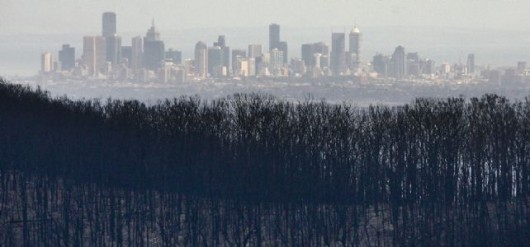 Melbourne: a wealthy growing city, neglecting Regional Victoria Melbourne: a wealthy growing city, neglecting Regional Victoria
.
“Our guys have been flat out trying to fight the fires and trying to pin them down a bit,” Mr Haynes said.
.
“The fire weather … was extreme and off the scale.”
.
By 6pm, at least one house was destroyed at Coleraine in Victoria’s west, in Melbourne’s southeast three homes were destroyed at Lyndbrook; and north of Melbourne six houses were destroyed at Wandong and one at Whittlesea. Homes were also lost in Labertouche, near the Bunyip State Park east of Melbourne.
“There will be more to come,” Mr Haynes said. Julie Venrooy said from Shady Creek, east of Melbourne, said she had been forced to stay on the Princes Highway south of Tonimbuk by police, unable to return to her home. “I’ve been able to contact my husband once. He’s had ember attack, that was about an hour ago but I don’t know what’s happened since,” Ms Venrooy said.
Victoria Premier John Brumby said one fire threatening his parents’ home in Coleraine was stopped literally on their doorstep.
“I would like to thank DSE, CFA and SES (State Emergency Services) fire fighters and volunteers who have fought tirelessly throughout the day to protect Victorian people and property,” Mr Brumby said.
The fires came as Melbourne reached its hottest ever temperature of 46.4 degrees (Celsius), while nearby Avalon recorded the state’s high of 47.9 (Celsius).
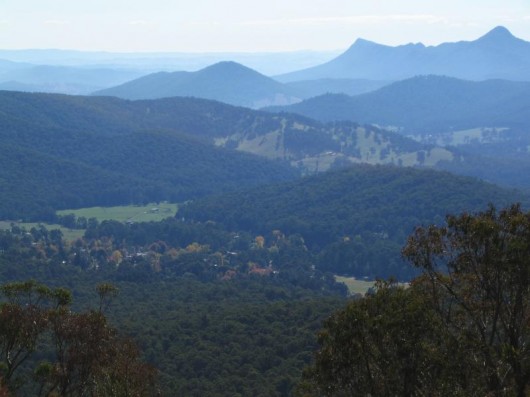 Remembering Marysville and indeed, Regional Victoria Remembering Marysville and indeed, Regional Victoria
.
Wednesday, January 18th, 2012
On Sunday 13th November 2006 two separate bushfire ignitions were believed to have been started by lightning just west of the Grose Valley of the Greater Blue Mountains World Heritage Area, according to the Rural Fire Service (RFS). One ignition was located outside the small rural village of Hartley Vale in a valley referred to as Lawsons Long Alley, while the other was in rugged bushland at Burra Korain Head about 4 km east of the village of Mount Victoria. Ten days later catastrophe…
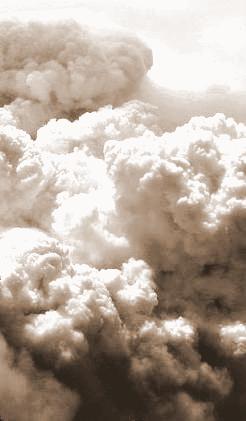 Pyrocumulus cloud as the Grose Valley goes up in smoke on 23rd November 2006 Pyrocumulus cloud as the Grose Valley goes up in smoke on 23rd November 2006
.
‘Two bushfires that were believed to have been started by lightning strikes on Monday are burning in the Blue Mountains National Park. A fire burning 2 km north of Mount Victoria has burnt out about 1100 hectares of private property and parkland and is burning on both sides of the Darling Causeway. The Darling Causeway remains closed to traffic and motorists are advised to use the Great Western Highway and Bells Line of Road as alternate routes.
A second fire burning about 5 km north of Blackheath in the Grose Valley has burnt out about 500 hectares of parkland. Waterbombing aircraft are slowing the progress of the fire as it is burning in difficult and inaccessible terrain.’
[Source: New South Wales Rural Fire Service Blue Mountains website, Fire Name: Lawsons Long Alley, Time Message Issued: 1700, Date Message Issued: 16/11/06, ^http://lists.rfs.org.au/mailman/listinfo/bluemountains-info]
.
At the time the RFS reported that the ‘fire is not threatening any properties or homes at this stage‘, but it was this reassurance that lulled the fire fighting effort into a false sense of security. Over the coming days the fires were not earnestly suppressed but instead allowed to burn out of control as neither were ‘threatening any properties or homes at this stage‘. Famous last words. Worse was that a series of broadscale backburns were started by the RFS at Hartley Vale, Blackheath and along Bells Line of Road – each of which at times got out of control.
.
Comparison with 2003 Canberra Firestorm
.
Three years prior, four ignitions that had been purportedly been sparked by lighting on 8th January 2003 were allowed to burn out of control in remote bushland outside Canberra, Australian Capital Territory (ACT), and starting outside the ACT in NSW. At the time, those fires were deemed not to be threatening any properties or homes at that stage too. Ten days later, the four fires – McIntyre’s Hut Fire, the Bendora Fire, the Stockyard Spur Fire and the Mount Gingera Fire all coalesced into what became known as the 2003 Canberra Firestorm in which four people perished.
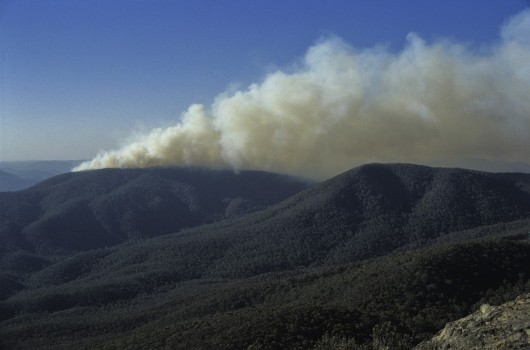 McIntyre’s Hut Fire 20030108 – distant, isolated and remote at this stage.
Ten days later it became the 2003 Canberra Firestorm McIntyre’s Hut Fire 20030108 – distant, isolated and remote at this stage.
Ten days later it became the 2003 Canberra Firestorm
.
Three years hence, the two bushfires west of the Grose Valley after seven days had coalesced into what has become known as the 2006 Grose Valley Fires that ended up incinerating 14,070 hectares of wild bush habitat, including the iconic Blue Gum Forest down in the Grose Valley inside the Greater Blue Mountains World heritage Area .
Both catastrophic bushfires were ultimately the responsibility of the RFS in New South Wales to suppress in order to prevent them becoming uncontrollable firestorms. The RFS failed catastrophically on both occasions with RFS Commissioner Phil Koperberg at the helm. The lessons from the 2003 Canberra Firestorm had not been heeded.
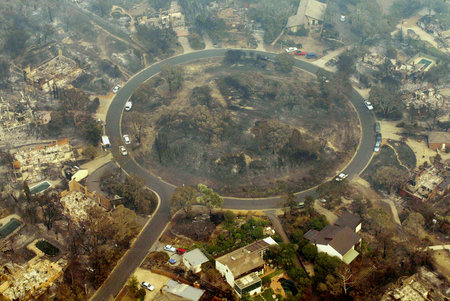 An aerial view of a fire-devastated Chauvel Circle in the suburb of Chapman on 21st January, 2003 in Canberra,
where 15 of 20 homes in the street were destroyed by fire.
Four people were killed and 419 homes destroyed when the fires being fought on five fronts swept through the nation’s capital.
(Photo by Daniel Berehulak, Getty Images) An aerial view of a fire-devastated Chauvel Circle in the suburb of Chapman on 21st January, 2003 in Canberra,
where 15 of 20 homes in the street were destroyed by fire.
Four people were killed and 419 homes destroyed when the fires being fought on five fronts swept through the nation’s capital.
(Photo by Daniel Berehulak, Getty Images)
.
According to the report of the official enquiry into the 2003 Canberra Firestorm by ACT Coroner Maria Doogan, she states:
‘During the inquiry it was submitted that the severity of the firestorm could not have been foreseen. I do not accept this. Australia has a recorded history of extreme fire events dating back to at least 1851. As discussed in Chapter 7 (of the Coroner’s Report), CSIRO fire expert Phil Cheney predicted several years ago a conflagration of the type experienced in January 2003. He made his prediction on the basis of information in the report of one of the seven inquiries that have been held since 1986 to examine various aspects of the ACT’s emergency services.
‘The point to make here is that experiences in life, be they good or bad, serve no useful purpose if we fail to learn from them. It is hoped, therefore, that the many lessons that can be learnt from this catastrophe in the ACT are in fact learnt and result in positive action, not just supportive words and shallow promises.’
[Source: ‘The Canberra Firestorm: Inquest and Inquiry into Four Deaths and Four Fires between 8 and 18 January 2003’, Vol 1, Ch1, pp.2-3., by ACT Coroner]
.
Blue Mountains Council’s response to the 2006 Grose Valley Fires
.
The 2006 Grose Valley Fires coalesced into a conflagration on Thursday 23rd November 2006 down in the World Heritage Grose Valley. Many in the local Blue Mountains community were outraged that this could have been allowed to have occurred. Public demands for answers finally led Blue Mountains Council two months later on Tuesday 30th January 2007 to agree to support the call of ‘concerned residents’ for the New South Wales Government to undertake a thorough, independent review of the Grose Valley Fires.
It is important to note that at the time there was a Labor Government in New South Wales, which was ultimately held responsible for both the 2003 and 2006 bushfire emergency responses.
The following is a copy of the official meeting minutes of Blue Mountains Council’s Ordinary Meeting of 20070130, two months after the 2003 Grose Valley Fires:
.
‘A Motion was moved by Councillors (Terri) Hamilton (Independent) and (Daniel) Myles (Liberal):
.
1. That the Council gratefully acknowledges the efforts of all the volunteers, professionals and agencies that worked together to control the recent Grose Valley Fire.
.
2. That the Council, in order that improvements in fire management can continue for the Blue Mountains and other parts of NSW, as a matter of urgency, writes to the Premier of New South Wales, the Hon Morris Iemma, stating it supports the call of concerned residents on the New South Wales Government, which appeared on page 13 of the Blue Mountains Gazette of 6 December, 2006, as follows:
“1. Undertake a thorough, independent review of the Grose Valley Fire, involving all stakeholders with particular attention to the following questions:
- Were fire detection and initial suppression timely and adequate?
- Were resources adequate, appropriate and supported?
- Were the adopted strategies the best available under the circumstances?
- Could other strategies of closer containment have offered lower risk to the community, better firefighter safety, higher probabilities of success, lower costs and less impact on the environment?
- Was existing knowledge and planning adequately utilised?
- Is fire management funded to the most effective way?
2. Ensure adequate funding is available for post-fire restoration, including the rehabilitation of environmental damage.
3. Fund more research to improve understanding of fire in the Blue Mountains landscape and methods for fire mitigation and suppression.
4. Improve research and training in strategies for controlling fires in large bushland areas.
5. Improve pre-fire planning to support decision-making during incidents.
6. Improve systems to ensure that local fire planning and expertise is fully utilised during incidents, and that the protection of the natural and cultural values of World Heritage areas and other bushland are fully considered.”
.
3. That the independent review includes addressing the questions raised by Blue Mountains Conservation Society:
a. The Blue Mountains City Council therefore supports the following adopted position of the Blue Mountains Conservation Society and would like the review to address the following questions:
i. In what circumstances are back burning from the “Northern Strategic Line” and the Bells Line of Road appropriate?
ii. What can be improved to ensure that lightning strikes or arson fires are contained as quickly as possible?
iii. What can be done to better manage fire risk in the Grose Valley in terms of preparation and suppression to minimise damage to people, property and biodiversity?
iv. What is needed to allow remote area fire teams to be able to work at night when conditions are more benign?
v. How can funding of bushfire management and suppression be changed to reduce overall costs to the community. (Federal funding of suppression under section 44 means funding for trail maintenance and planning is limited.)
.
b. If practicable, would the review also address the following?
i. The World Heritage Area contains a number of threatened species and ecological communities that, in addition to the direct threats associated with climate change, are particularly vulnerable to increased fire frequency and intensity.
ii. The effects on biodiversity of the fire regimes in the Grose Valley over the last 40 years, where there has been a succession of large intense wild fires without sufficient interval between them.
iii. Climate change predictions suggest a probability of more frequent and more intensive fire events, with significant implications for fire management and integrity of ecosystems.
iv. The Blue Mountains City Council also supports and requests involvement in the forum being organised by the Director of the Central Branch of the National Parks and Wildlife Service, Bob Conroy, on the 17 February 2007.
.
4. That the Council emphasises that the requested review should be of a scientific and technical nature.
.
5. That a copy of this letter be forwarded to the Minister for Emergency Services, the Hon Tony Kelly, the Member for the Blue Mountains, the Hon. Bob Debus, and the New South Wales Opposition Leader, Peter Debnam.
.
Upon being PUT to the Meeting, the MOTION was CARRIED, the voting being:
FOR:
- Fiona Creed (Liberal)
- Terri Hamilton (Independent)
- Pippa McInnes (Greens)
- Daniel Myles (Liberal)
- Kerrin O’Grady (Greens)
- Lyn Trindall (Blue Mountains First
.
AGAINST:
- Mayor Jim Angel (Labor)
- Kevin Frappell (Labor)
- Alison McLaren (Labor)
- Adam Searle (Labor)
- Chris Van der Kley (Liberal) and Chair of Blue Mountains Bush Fire Management Committee
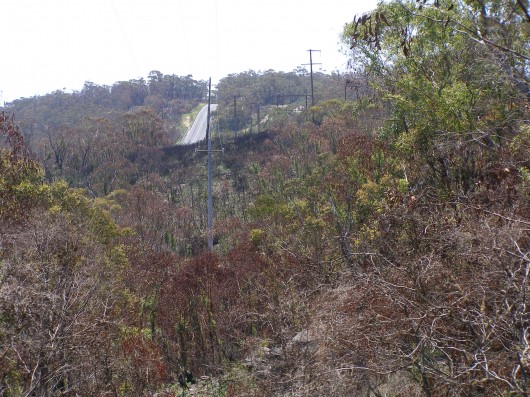 The Hartley Vale backburn 20061115 escaped up Hartley Vale Road and over the Darling Causeway (above) toward the Grose Valley to the right
(Photo by Editor 20070204, free in pubic domain, click to enlarge) The Hartley Vale backburn 20061115 escaped up Hartley Vale Road and over the Darling Causeway (above) toward the Grose Valley to the right
(Photo by Editor 20070204, free in pubic domain, click to enlarge)
..
Editor’s Note:
Ahead of the Blue Mountains Council voting for the above motion, two Labor Councillors, Clr Chris Van der Kley (also Chair of the Blue Mountains Bush Fire Management Committee) and Clr Kevin Frappell (Labor) moved an alternative motion, however it was lost upon voting. This proposed alternative motion was labelled an ‘amendment’ but it was significantly different in detail. The proposed amendment excluded calls for an independent review (per the first item in the original motion).
This proposed amendment also excluded asking the six key questions put by the concerned residents such as ‘Were fire detection and initial suppression timely and adequate?‘, ‘Is fire management funded to the most effective way?‘, etc.
This proposed amendment also excluded that part of Item 1 which recommended strategic improvements to bushfire management such as ‘Ensure adequate funding is available for post-fire restoration, including the rehabilitation of environmental damage‘ and ‘Fund more research to improve understanding of fire in the Blue Mountains landscape and methods for fire mitigation and suppression‘, etc.
This proposed amendment instead drew upon the view of the leadership of the Blue Mountains Conservation Society at the time that considered an independent enquiry would equate to criticism and assigning blame and so be politicised. This did however include advocating “an interagency and technical review process, to tease out the lessons learned.”
.
The Amendment (although lost in the Council voting) is important for the record and read as follows:
1. That the Blue Mountains City Council gratefully acknowledges the efforts of all the volunteers, professionals and agencies that worked together to control the recent Grose
Valley fire.
.
2. That the Blue Mountains City Council supports the recent position adopted by the Blue Mountains Conservation Society in relation to the Grose Valley fire in November
2006. We note and support the position of the Society when it says,
“The circumstances of the bushfire are complex and it is not in anyone’s interest for criticism or blame to be apportioned. However, there is much to be gained by looking at what was done and how it can be improved. The Society does not therefore support a large public inquiry and its attendant politicisation. Instead, the Society advocates an interagency and technical review process, to tease out the lessons learned.”
.
3. That the Blue Mountains City Council therefore supports the following adopted position of the Blue Mountains Conservation Society and would like the review to
address the following questions:
- In what circumstances are back burning from the “Northern Strategic Line” and the Bells Line of Road appropriate?
- What can be improved to ensure that lightning strikes or arson fires are contained as quickly as possible?
- What can be done to better manage fire risk in the Grose Valley in terms of preparation and suppression to minimise damage to people, property and biodiversity?
- What is needed to allow remote area fire teams to be able to work at night when conditions are more benign?
- How can funding of bushfire management and suppression be changed to reduce overall costs to the community. (Federal funding of suppression under Section 44 means funding for trail maintenance and planning is limited.)
.
If practicable, would the review also address the following?
- The World Heritage Area contains a number of threatened species and ecological communities that, in addition to the direct threats associated with climate change, are particularly vulnerable to increased fire frequency and intensity.
- The effects on biodiversity of the fire regimes in the Grose Valley over the last 40 years, where there has been a succession of large intense wild fires without
sufficient interval between them.
- Climate change predictions suggest a probability of more frequent and more intensive fire events, with significant implications for fire management and
integrity of ecosystems.
- That the Blue Mountains City Council also supports and requests involvement in the forum being organised by the Director of the Central Branch of the National Parks and Wildlife Service, Bob Conroy, on the 17 February 2007.
.
Upon being PUT to the Meeting, the AMENDMENT was LOST, the voting being:
FOR:
- Mayor Jim Angel (Labor)
- Kevin Frappell (Labor)
- Alison McLaren (Labor)
- Adam Searle (Labor)
- Chris Van der Kley (Liberal, and Chair of Blue Mountains Bush Fire Management Committee)
.
AGAINST:
- Creed (Liberal)
- Hamilton (Independent)
- McInnes (Greens)
- Myles (Liberal)
- O’Grady (Greens)
- Trindall (Blue Mountains First)
.
[Source: Blue Mountains Council’s Ordinary Meeting, 20070130, Minute No. 7, File Ref. C01095. Subject: ‘Grose Valley Fire’, pp.15-16]
.
Editor’s Analysis:
.
- Similar failure by the RFS and the National Parks and Wildlife Service (NPWS) to muster all available necessary resources to suppress and extinguished both the Lawson’s Long Alley and Burra Korain Head fires, demonstrated that lessons from the 2003 Canberra Firestorm had not been learnt. Critical time was lost in the initial days of the ignitions at both to effectively suppress the fires while they were of a small size and weather conditions relatively favourable to enable suppression.
- The RFS strategy to apply excessive broadscale backburning on multiple fronts at at Hartley Vale, Blackheath and Bells Line of Road exacerbated the complexity and scale of both fires and in the most part contributed to the conflagration of all the fires down in the Grose Valley on 23rd November 2006
- The shortcoming of not mustering all necessary resources to suppress and extinguish bushfires, irrespective of whether a fire is immediately affecting property and homes or not, is flawed, negligent and only heightens the inherent risk of a bushfire escalating out of control. The risk of a bushfire escalation into uncontrollable firestorm is heightened as time allows for the prospect of worsening bushfire weather conditions – increased wind, wind gusts, wind direction, temperatures, and lowering humidity – contributory factors in both the respective Canberra and Grose Valley Fires. There is no indication that this operational culture has changed.
- That a bushfire is situated in inaccessible terrain is not an excuse for bushfire management not to muster all airborne and RAFT resources to suppress and extinguish it as soon as feasibly possible
- After local community realisation that the bushfire had overrun the Grose Valley including burning through the iconic Blue Gum Forest on 23rd November, an informal collection of local ‘concerned residents‘ formed numbering 143 and co-ordinated by Blue Mountains resident Ian Brown. By Wednesday 6th December, within days of the fire finally being suppressed (3rd Dec), this informal group had collectively paid for a full page letter in the Blue Mountains Gazette newspaper costing $2,131.40(page 13). The letter was entitled ‘Burning Issues – fire in the Grose Valley – A statement funded and supported by concerned residents‘. The context was that detailed in Council’s carried motion above.
- Blue Mountains Council’s response was simply a manifestation of the “supportive words and shallow promises” whom ACT Coroner Maria Doogan had cautioned in the Coroner’s Report into the 2003 Canberra Firestorm. No effective Council follow up to its supportive words was undertaken. Sure per Council’s carried motion, Council’s then acting General Manager, Dave Allen, sent off the letter with supportive words to the NSW Premier Morris Iemma, on 20th February 2007, but Council took no other review or enquiry action.
- In the Central Blue Mountains, there are three government agencies responsible for bushfire management – the New South Wales Rural Fires Service, the National Parks and Wildlife Service as part of the NSW Department of Environment (what ever its frequently changing title) and Blue Mountains Council. Collectively these three bodies have co-operated under the Blue Mountains Bush Fire Management Committee, which was/is chaired by Blue Mountains Councillor Chris van der Kley.) and is responsible for planning in relating to bush fire prevention and coordinated bush fire fighting, as well as responsible for advising the Commissioner on bush fire prevention; mitigation and coordinated bush fire suppression. Included on the Committee is also the Commissioner of the RFS, and a nominated representative respectively from the NSW Fire Brigades, Forests NSW, NPWS, the Local Government Association of NSW, the Shires Association of NSW, the NSW Rural Fire Service Association, NSW Police, a nominee of the Minister for the Environment (then Bob Debus), a representative of the Nature Conservation Council of NSW, a person appointed by the Minister on the recommendation of the NSW Farmers Association, a representative of the Department of Community Services and a representative of the Department of Lands. In March 2008, the Blue Mountains Bush Fire Management Committee (BMBFMC) staged a series of community workshops on the Plan’s review process. The Plan was approved on 14th December 2000 with a required review every five years. So by the Grose Valley Fire, the Plan was a year out of date and by March 2008 the Plan was three years out of date.
- It is not surprisingly that the above proposed amendment to the Council letter to the NSW Premier excluded calls for an independent review. Those who proposed the motion and who voted for it were either all Labor Party members or in the case of Liberal Councillor Chris Van Der Kley, Chair of the Blue Mountains Bush Fire Management Committee who was operationally involved. An independent enquiry and the proposed strategic improvements to the bushfire management establishment would have likely revealed operational and government failings and recommended changes to the RFS structure, strategies, and management and importantly to its culture. The amendment was rejected anyway due to Labor having insufficient votes on Council.
- On Sunday 13th November 2006 two separate bushfire ignitions were believed to have been lit by lightning just west of the Grose Valley of the Greater Blue Mountains World Heritage Area by the RFS. Following a back burn/hazard reduction burn that had got out of control up Hartley Vale Road and crossed the Darling Causeway, on Wednesday 15th November the RFS declared a formal escalation to a Section 44 bushfire emergency. This four day delay in detection and suppression is unexplained by the RFS.
- Despite the calls by the concerned residents (with Blue Mountains Council’s supportive words) for the ‘NSW Government to undertake a thorough, independent review of the Grose Valley Fire, involving all stakeholders, so such independent review was done.
- The local Labor member for the NSW Seat of Blue Mountains at the time and NSW Minister for the Environment was Bob Debus MP, who categorically refused requests for either an independent review or a public review into the management of the Grose Valley Fires.
- The Blue Mountains Conservation Society (BMCS) similarly rejected calls for a public enquiry, stating “the circumstances of the bushfire are complex and it is not in anyone’s interest for criticism or blame to be apportioned. However, there is much to be gained by looking at what was done and how it can be improved. The Society does not therefore support a large public inquiry and its attendant politicisation. Instead, the Society advocates an inter-agency and technical review process, to tease out the lessons learned.” It needs to be pointed out that key committee members of the BMCS were/are also active members of the RFS, which raises the issue of and actual or perceived conflict of interest.
- There were two reviews of sorts, none independent and none public.
- On Tuesday 19th December 2006 there was apparently an ‘Inter-Agency Review‘ which took place at Katoomba behind closed doors by members of bushfire management and operating personnel involved in the fire fighting. Despite requests by this Editor, no minutes or reports of that meeting were ever forthcoming. The meeting was internal and secret.
- On Saturday 17th February 2007, there was a ‘Grose Valley Fire Forum‘ held at Mount Tomah organised by Director of the Central Branch of the National Parks and Wildlife Service, Bob Conroy, and the Blue Mountains World Heritage Institute. Only selected participants were permitted to attend – mainly from the bushfire management, fire experts and selected members of the Blue Mountains Conservation Society. A copy of the report of that forum will be publicised on this website shortly.
- Following ongoing community concerns about the lack of transparency, no evidence of any lessons being learned from the Grose Valley Fires and even of a cover up into some of the operational decisions, in January 2007 Bob Debus MP announced a suggestion of there being an Environmental Summit to be staged in the Blue Mountains to provide the first public forum into important environmental issues affecting the Blue Mountains region, notably to discuss the Grose Valley Fire. Well, by the time the summit eventuated it was over a year later and held on the weekend of 23rd and 24th February 2008. By then Bob Debus had moved to federal politics (though still representing the Blue Mountains via the Seat of Macquarie. The summit was chaired by the RFS Commissioner responsible for the 2006 Grose Valley Fires, Philk Koperberg (now local Labor MP) and even the bushfire Incident Controller of the 2006 Grose Valley Fires, RFS Superintendent Mal Cronstedt, was in attendance. However, the summit was now called a conference and the agenda had expanded to many issues including Energy, Social Systems, Natural Systems and Water. Discussion about bushfire was restricted to a two hour workshop and so available time to the Grose Fire to one or two questions which copped only official spiel. It was a classic Labor tactic or stalling on accountability until the community gives up or forgets.
- Since 2006, the Blue Mountains community still doesn’t know whether in the 2006 Grose Valley Fire or currently:
- Fire detection and initial suppression was/is timely and adequate?
- Whether bushfire management resources were/are adequate, appropriate and supported?
- Whether in the Grose Valley Fire the adopted strategies were the best available under the circumstances?
- Whether other strategies of closer containment could have offered lower risk to the community
- Whether currently it has better firefighter safety, higher probabilities of success, lower costs and will cause less impact on the environment?
- Whether existing knowledge and planning is adequately utilised?
- Whether bushfire management is funded to the most effective way?
- Is adequate funding available for post-fire restoration, including the rehabilitation of environmental damage?
.
Another three years hence, in the Blue Mountains we have witnessed from afar the catastrophic Victorian ‘Black Saturday’ Bushfires of 7th February 2009.
.
Another three years hence in 2012, have we learnt anything?
.
Tags: 2003 Canberra Firestorm, Bliue Mountains Conservation Society, Blue Gum Forest, Blue Mountains Bush Fire Management Committee, Blue Mountains City Council, Blue Mountains National Park, broadscale backburning, Burra Korain Fire, Burra Korain Head, funding of bushfire management, Grose Valley Fire Forum, Grose Valley Fires 2006, Labor Government, Lawsons Long Alley Fire, McIntyre's Hut Fire, Northern Strategic Line, NSW Rural Fire Service, RFS, RFS Commissioner Phil Koperberg, RFS Superintendent Mal Cronstedt
Posted in Blue Mountains (AU), Threats from Bushfire | No Comments »
Add this post to Del.icio.us - Digg
Thursday, January 12th, 2012
[This article was initially published by Tigerquoll on CanDoBetter.net on 20090703 under the title ‘Victorian Bushfires: CFA ill-prepared and reliant on obsolete firefighting technologies‘].
 The charred shell of a $350,000 CFA fire-tanker near Belgrave Heights, Dandenongs
Victoria in the aftermath of the 2009 Victorian Bushfires
(Photo: Craig Abraham, The Age, 20090225) The charred shell of a $350,000 CFA fire-tanker near Belgrave Heights, Dandenongs
Victoria in the aftermath of the 2009 Victorian Bushfires
(Photo: Craig Abraham, The Age, 20090225)
.
The above fire tanker was fortunately able to protect three firefighters from an out-of-control bushfire as it burnt over them.
But in 1998, a burn-over incident during a bushfire at Linton, near Ballaarat, tragically killing five CFA volunteers.

A report by ABC journalist, Jane Cowan, 20090701, ‘Bushfire lawyers blast CFA’s Rees‘ states that lawyers assisting Victorian State Premier John Brumby’s Royal Commission into the 2009 Victorian Bushfires have in an interim report concluded that the Victorian Country Fire Authority (CFA) was ill-prepared for what has been labelled by the media as ‘Black Saturday‘ (7th February 2009).
The lawyers have criticised CFA chief fire officer, Russell Rees, as having been “divorced from fundamental aspects of the responsibilities” as chief officer, including the provision of public warnings and the protection of life and assert that Mr Rees “should have made himself aware of predictions forecasting the path of the fires.”
Criticism has also been made about the reliance by the CFA on obsolete fire fighting technologies. Bushfire consultant assisting the Commission, Tony Cutcliffe, has stated “We still have people running these organisations who are predominantly devoted to a firefighting technology that is no longer in vogue let alone being attuned to the needs of behavioural management and leadership.”
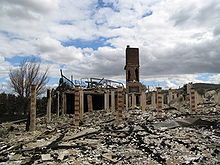
What is most disturbing of all is that hereon the CFA looks to continue business as usual.
The CFA says it has full confidence in Mr Rees and expects him to be at the helm again this summer. Mr Cutcliffe has expressed his concerns that:
.
‘Whatever changes are made, as it stands now the same management team that presided over the system which failed to cope on Black Saturday will be required to implement the new regime. If the calamity of what happened to Victoria last summer won’t force an overhaul of firefighting in Australia, what will?
.
The CFA’s old-school firefighting culture dies hard:
- The CFA remains an emergency response organisation almost totally dependent on a disparate weekend volunteer base (not the fault of the volunteers who are effectively unpaid public servants);
- The CFA’s bushfire notification system is wholly reliant on public calls to 000;
- The CFA’s fire fighting response system is centred around urban fire trucks that cannot access remote ignitions and so must wait until accessible from a roadside, when the fire is by then often out of control.
.
Taking fire trucks into the bush to fight fires is deadly as the above photo shows;
- The CFA remains a public authority with carte blanche to allow and deliberately cause immense irreversible damage to Victoria’s remaining ecolgical habitat, yet with no ecological expertise in its management or ranks;
- The CFA is grossly underfunded by state and federal governments.
Some questions:
- Given that unprecedented extreme weather was forecast and known to the CFA, what commensurate planning, preparation and response did the CFA deploy and when?
- What improvements in fire fighting practices have been implemented by the CFA since the 1983 Ash Wednesday fires to avoid a repeat?
- Where are the statistics showing the fire fighting performance in respect to each reported ignition, namely:
- Elapsed time from estimated ignition time to detection time (CFA becoming aware of ignition)?
- Elapsed time from detection time and on site response time (CFA arriving at the fire site/front with fire fighting equipment)?
- Elapsed time from response time to suppression time (fire extinguished by CFA)?
These are the three core fire fighting performance metrics.
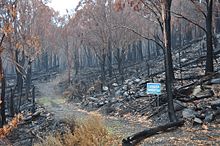
The 2009 Victorian Bushfire Royal Commission is following its terms of reference in assessing the specific facts and specific causes of the fires and logically as expected is starting to lay blame.
What’s the bet many findings are similar to those of previous bushfire investigations?
If the Royal Commission finds that the current system and structure of Victoria’s (read ‘Australia’s’) volunteer firefighting organisation was at fault, then this is a constructive outcome.
Only at such a legal level will change be forced on the system and culture. Previous internal debrief meetings and investigations (e.g. the 2003 Esplin Enquiry) have managed to have lessons from bushfire disasters ignored and fire fighting practices remain relatively unchanged.
If fire fighting is becoming more effective then how can such tragedies be continuing and growing in scale? How much more 20-20 hindsight is needed by the so-called ‘experienced’ fire fighting leadership before we can observe tangible improvements in fire fighting performance?
It’s all same old same old.
Given the dire inadequacies of this organisation, the culture has forced to become one of absolute defeatism – the only way it believes it can deal with bushfires is to slash and burn as much of the natural burnable landscape as possible, so that there is nothing left to burn. It’s as crackbrained as backburning through Belgrave Heights in order to save Belgrave.
Change cannot be brought to the CFA within the CFA. Change must come from Brumby and Rudd.
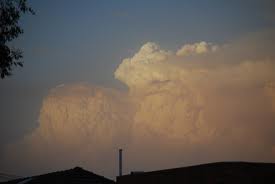 . .
(Ed: While Victorian Premier John Brumby has since been dismissed by election, PM Kevin Rudd currently remains as Australia’s Labor Foreign Minister. But Rudd has been discredited by this tragedy due to the grossly substandard emergency response, recovery, rebuilding and lack of proper emergency investment. His tangible disregard for victims deserves him to be sacked. Rudd has set the foundation for bushfire emergency history to repeat itself, all the while those who suffered still suffer; all the while Australia’s native wildlife are pushed by human ecological abuse and negligence closer to extinction, yet in absence of government care and funding. Australia’s Liberal-Labor governments remain immoral ecological extinctionists, comparable in ecological terms to the Cambodian Khmer Rouge).
.
|
|
 Flogging the bush for housing, undefendable in the event of a bushfire
Stuarts Road, Katoomba – a house has since been approved by Council and subsequently built on this site, killing the wildlife habitat in the process.
Flogging the bush for housing, undefendable in the event of a bushfire
Stuarts Road, Katoomba – a house has since been approved by Council and subsequently built on this site, killing the wildlife habitat in the process.
























































































